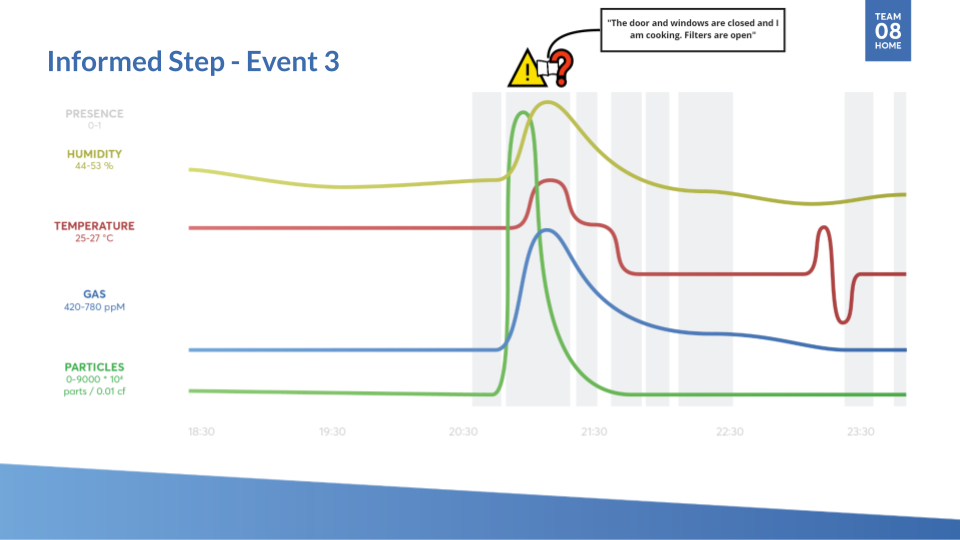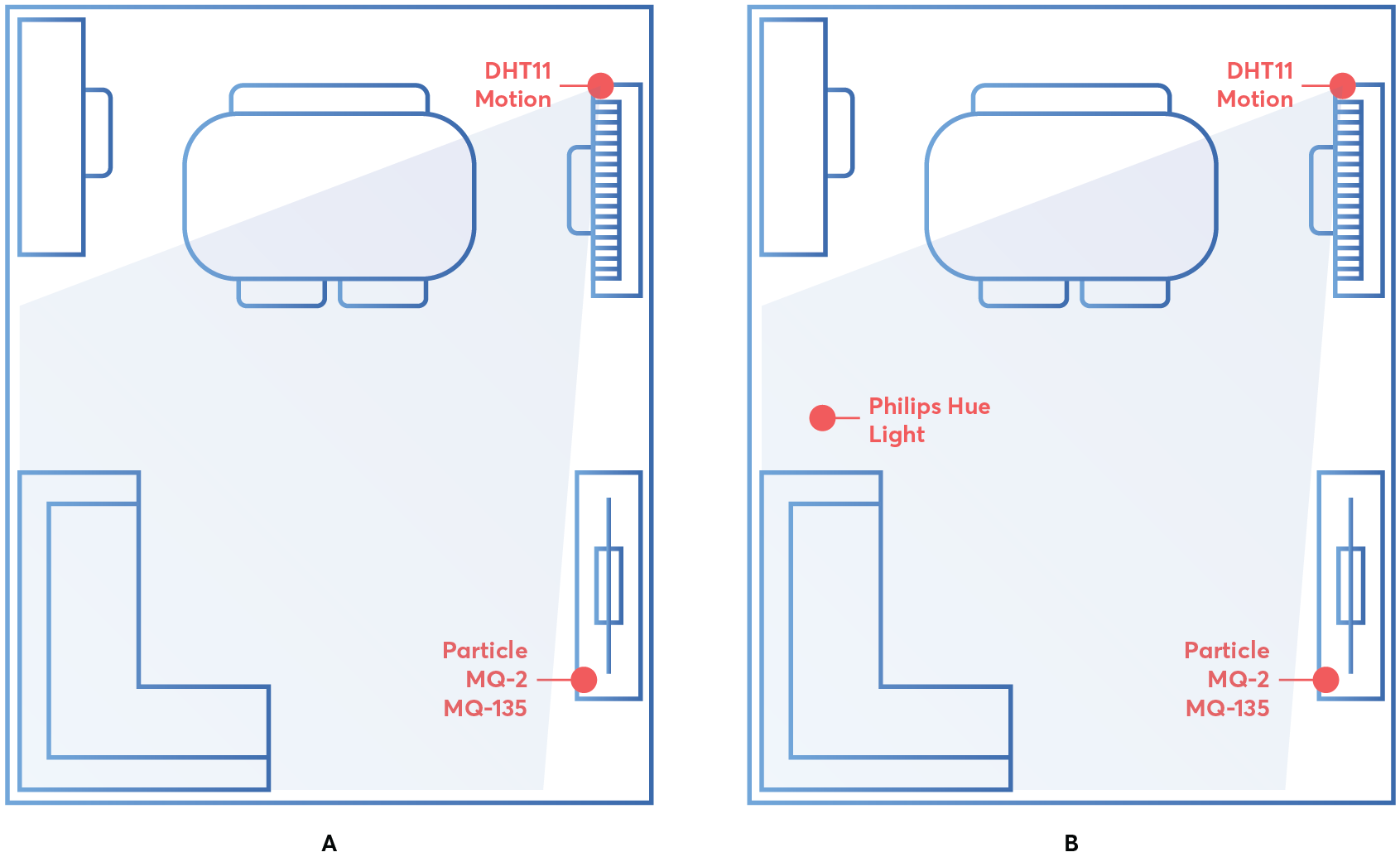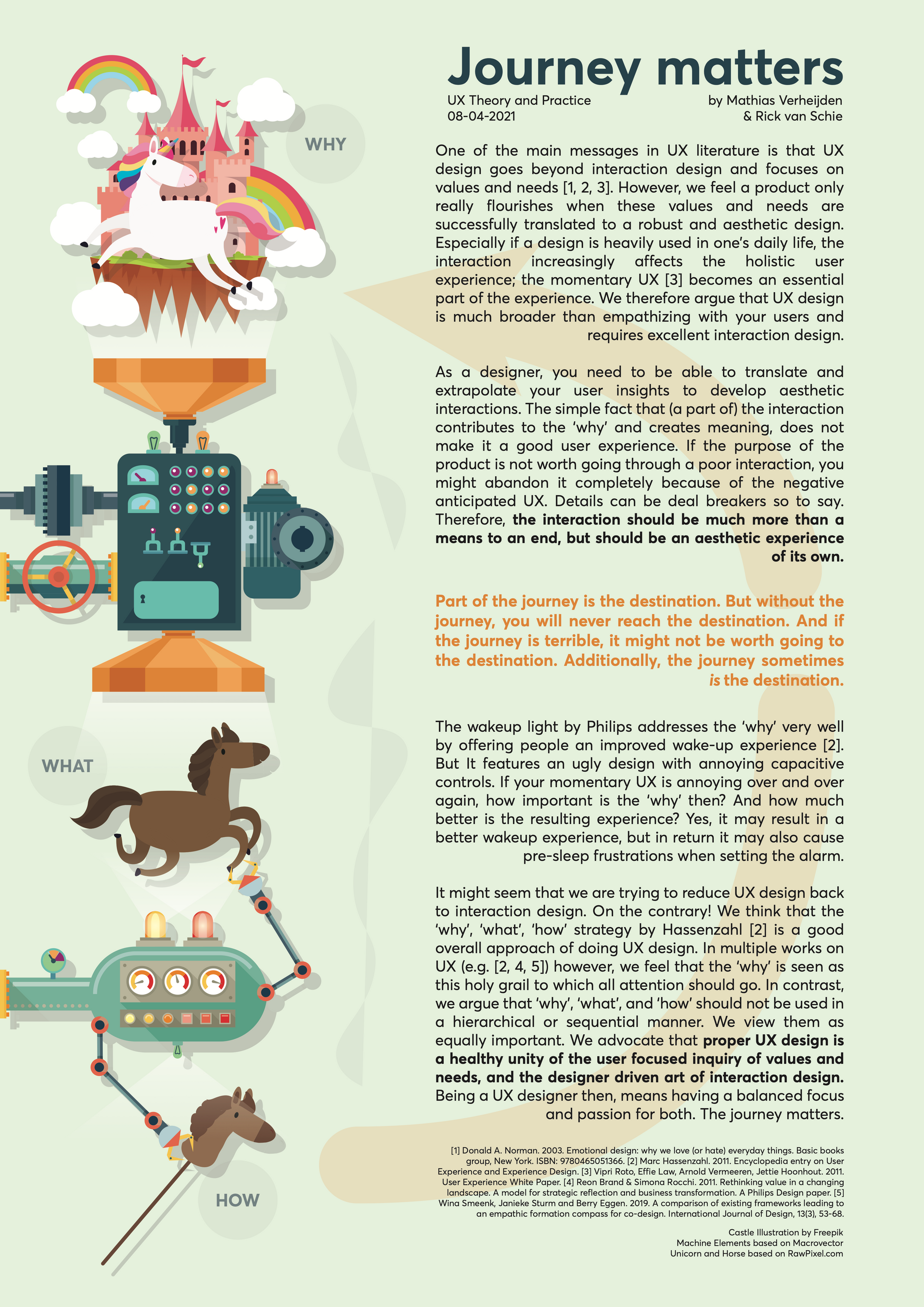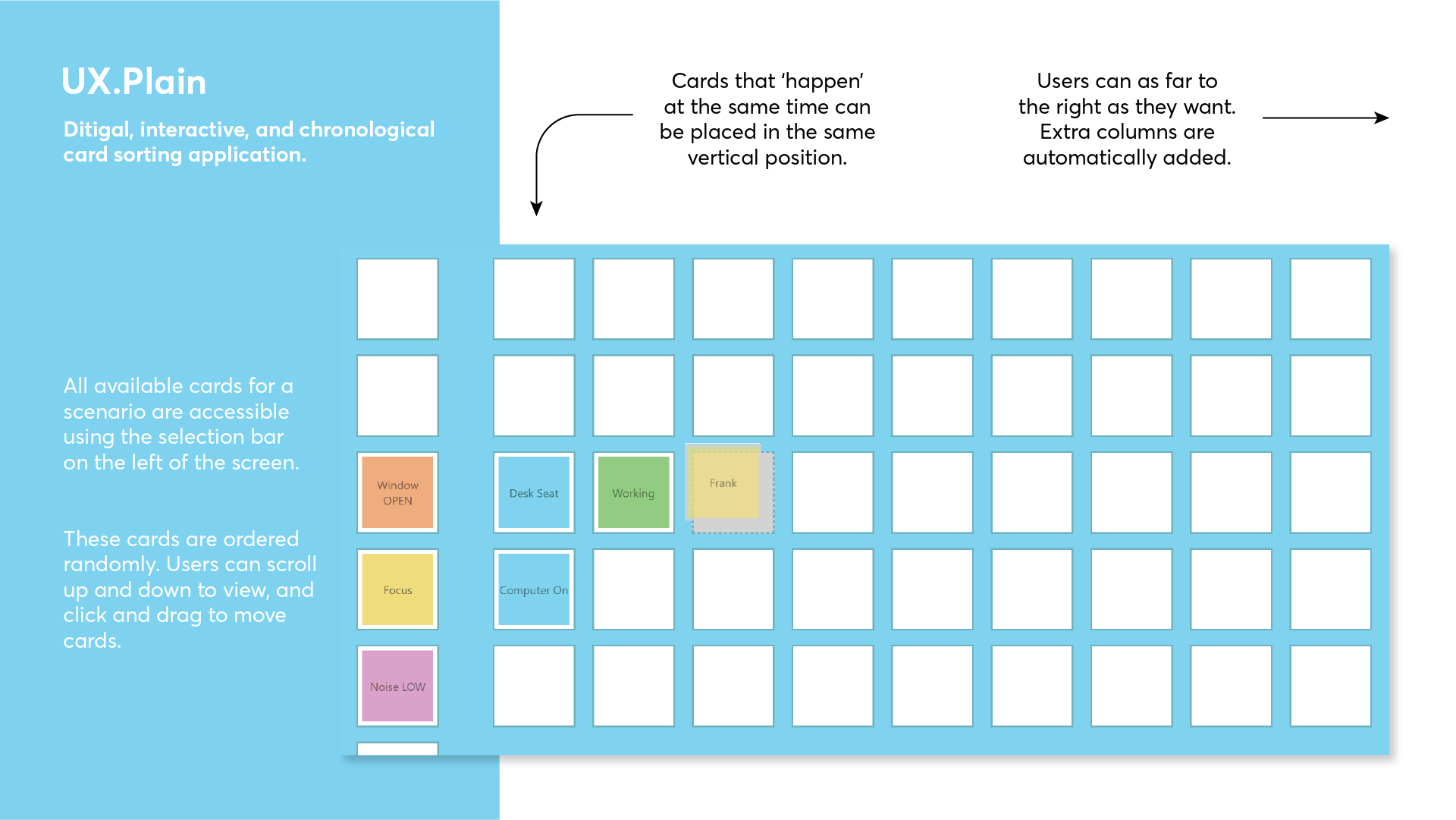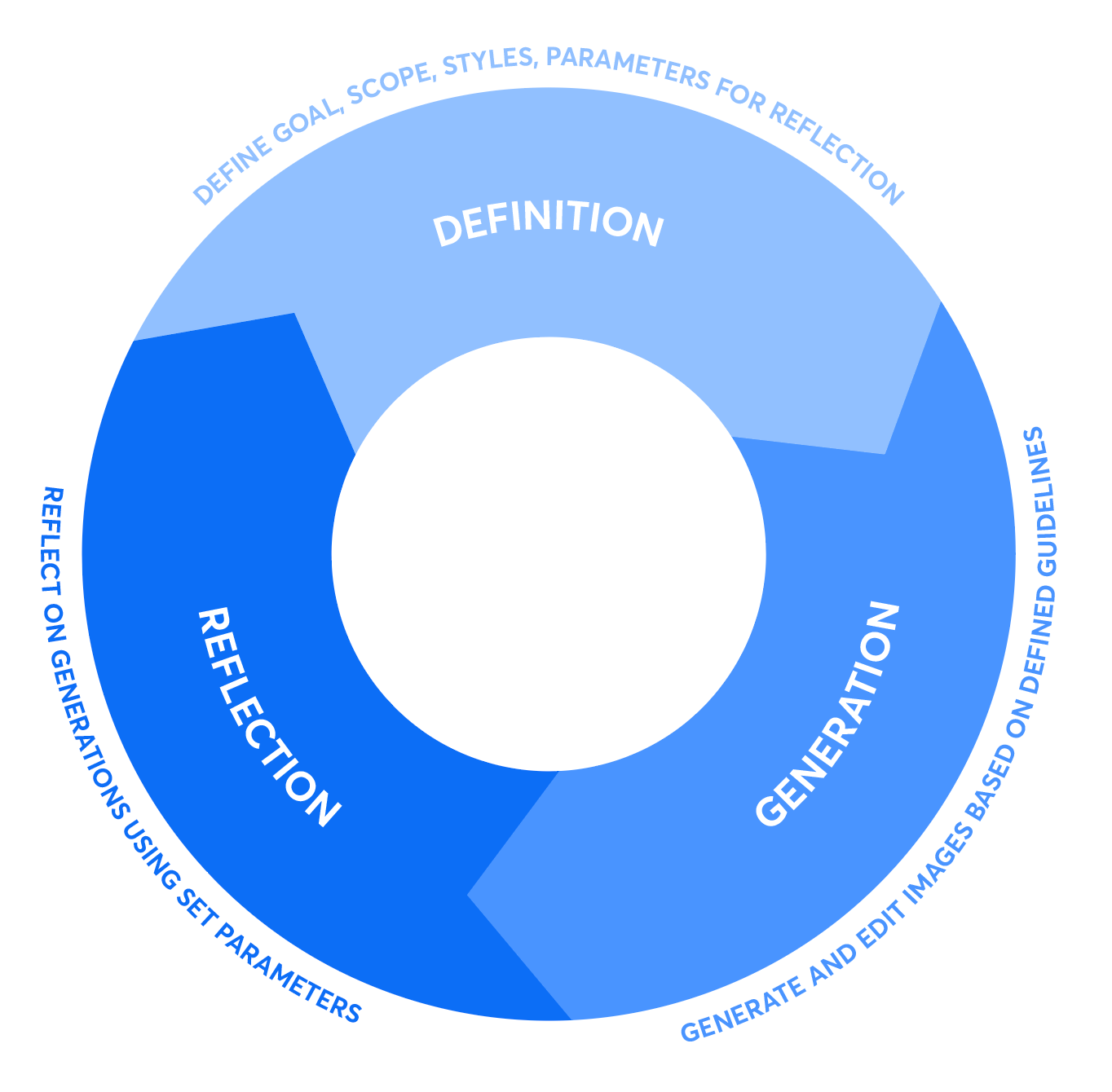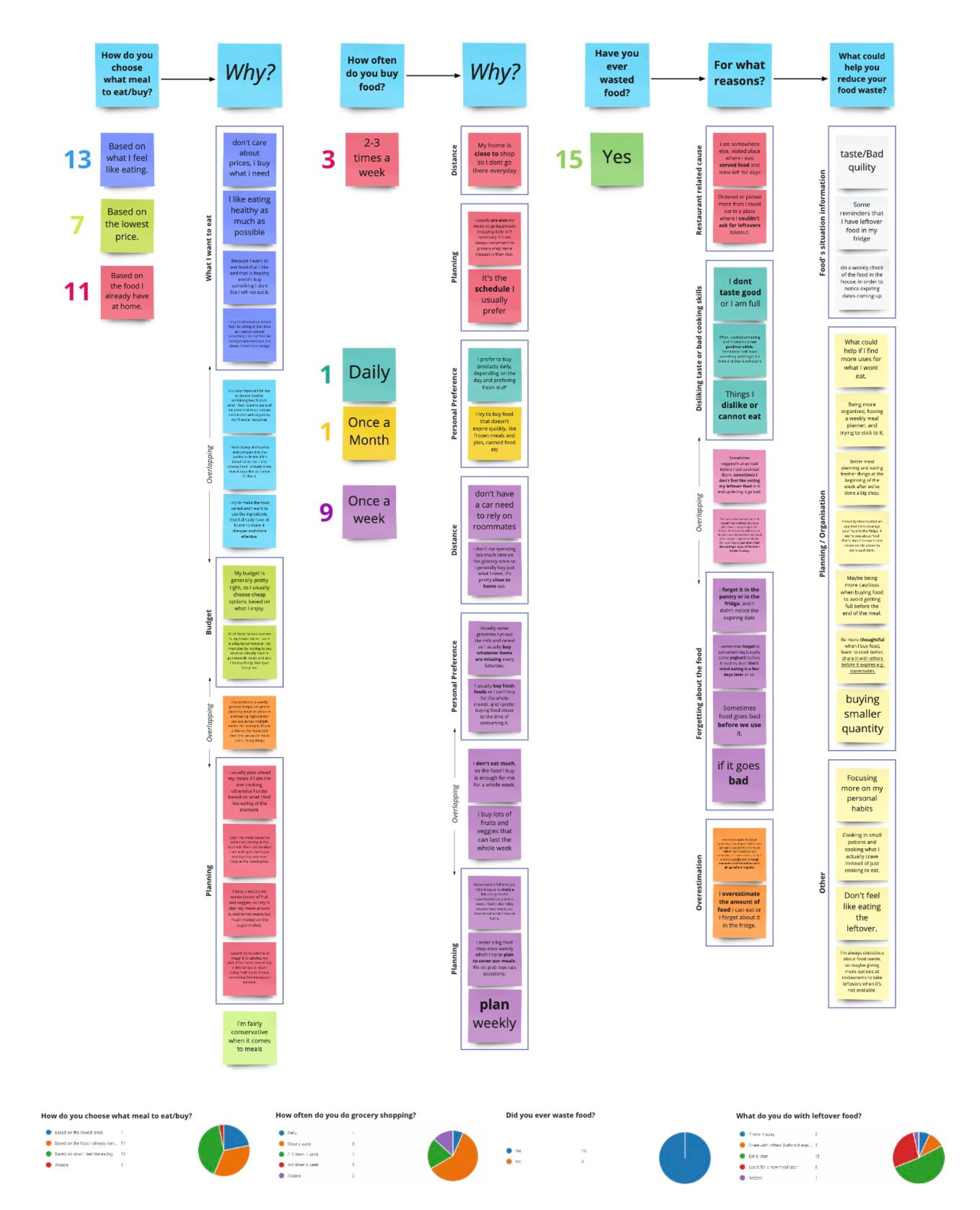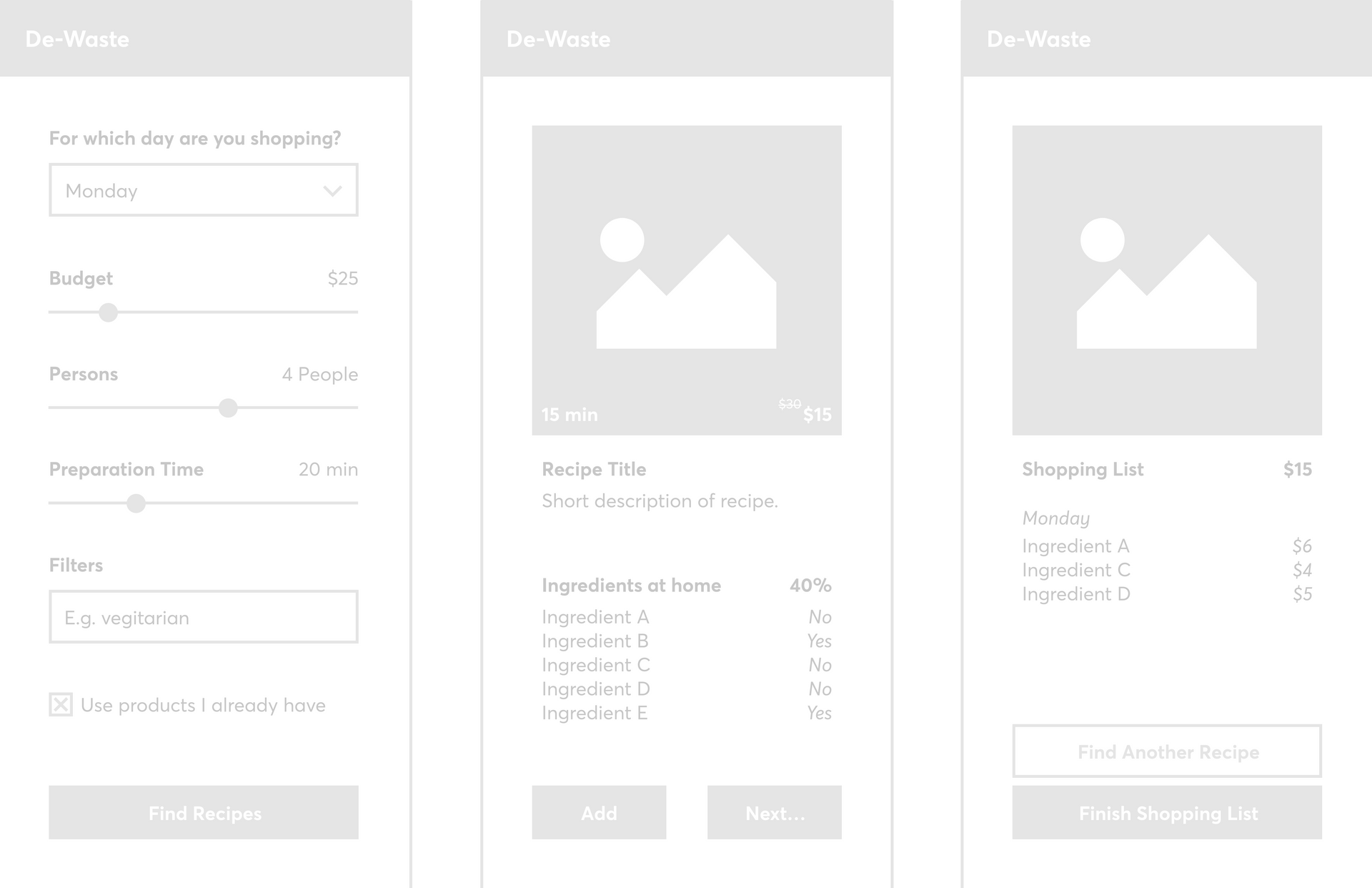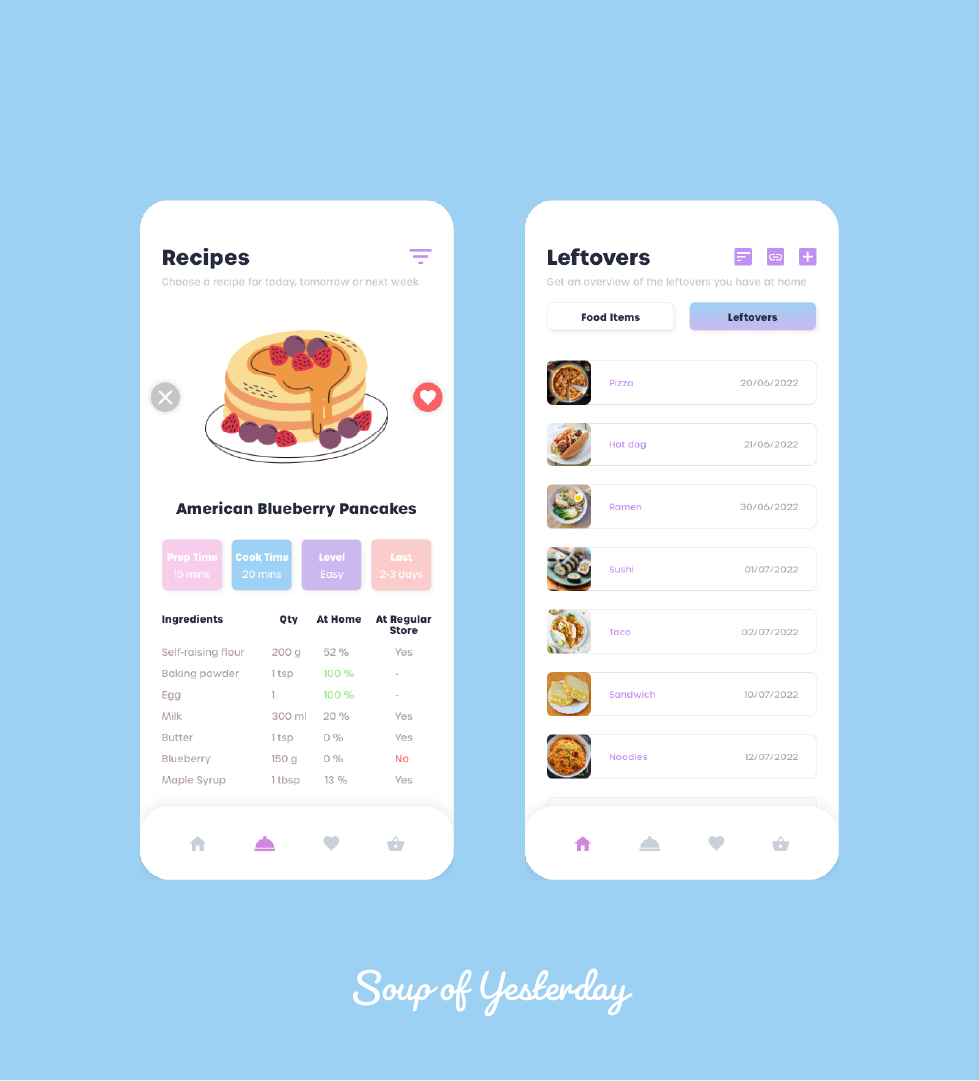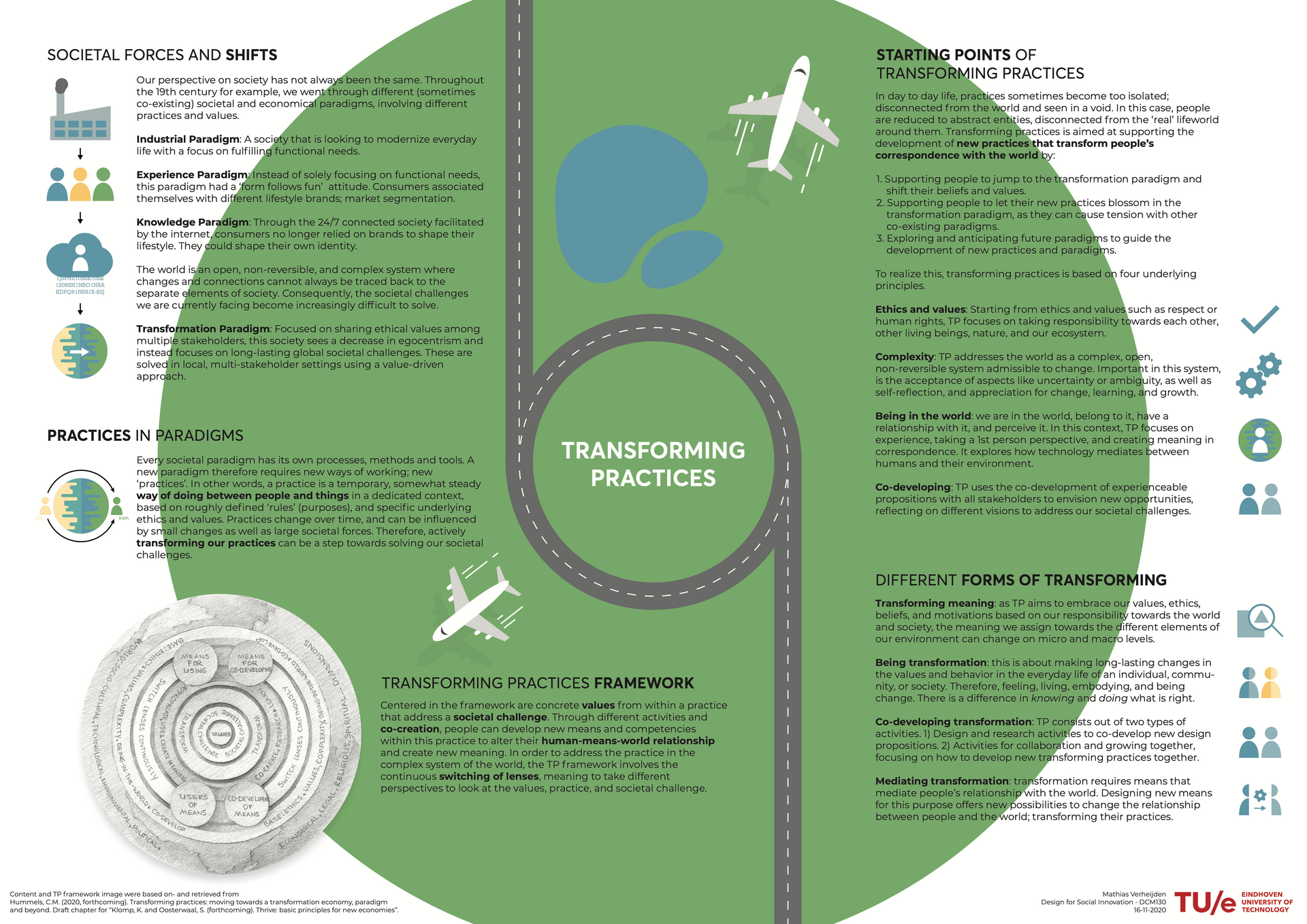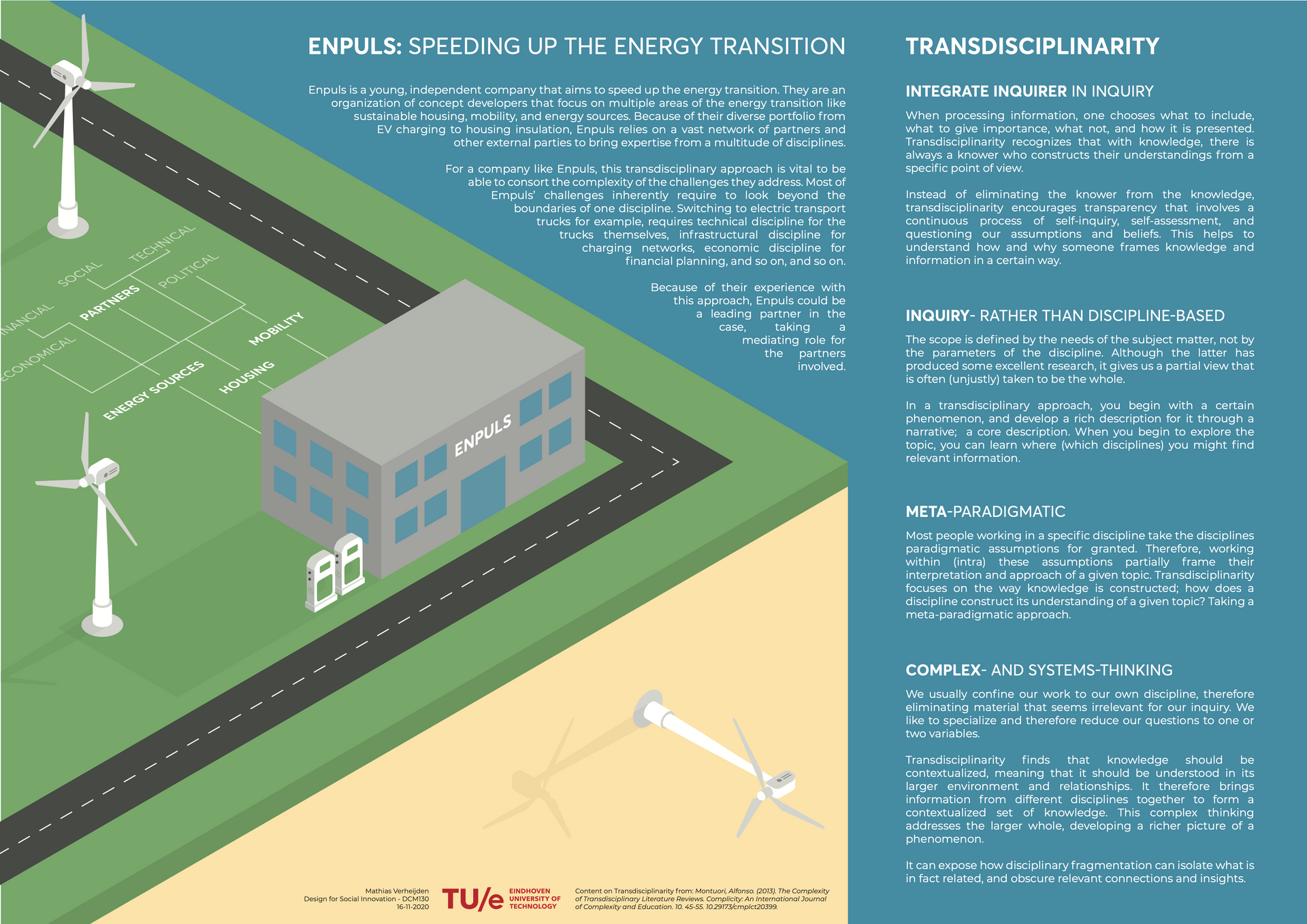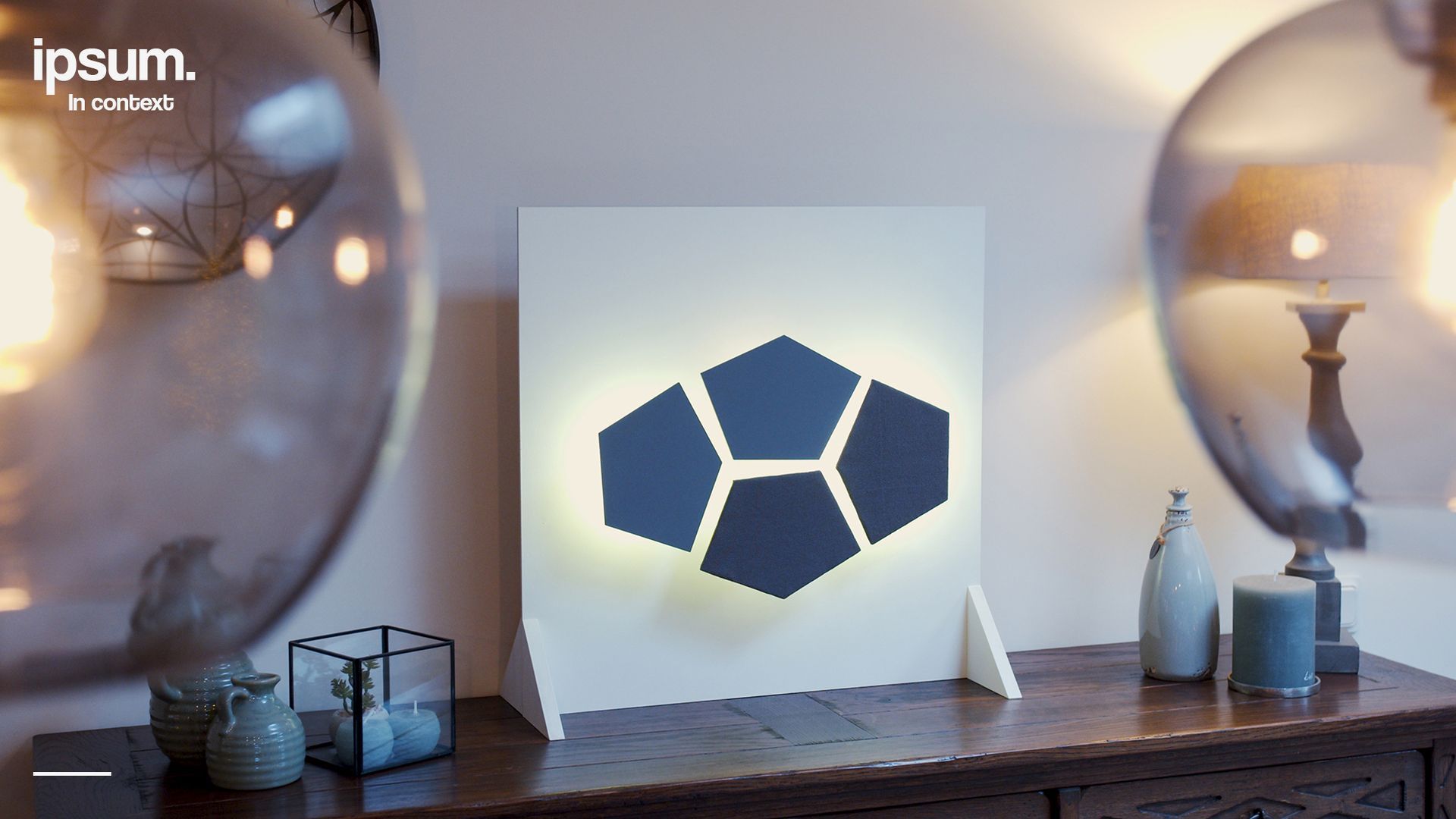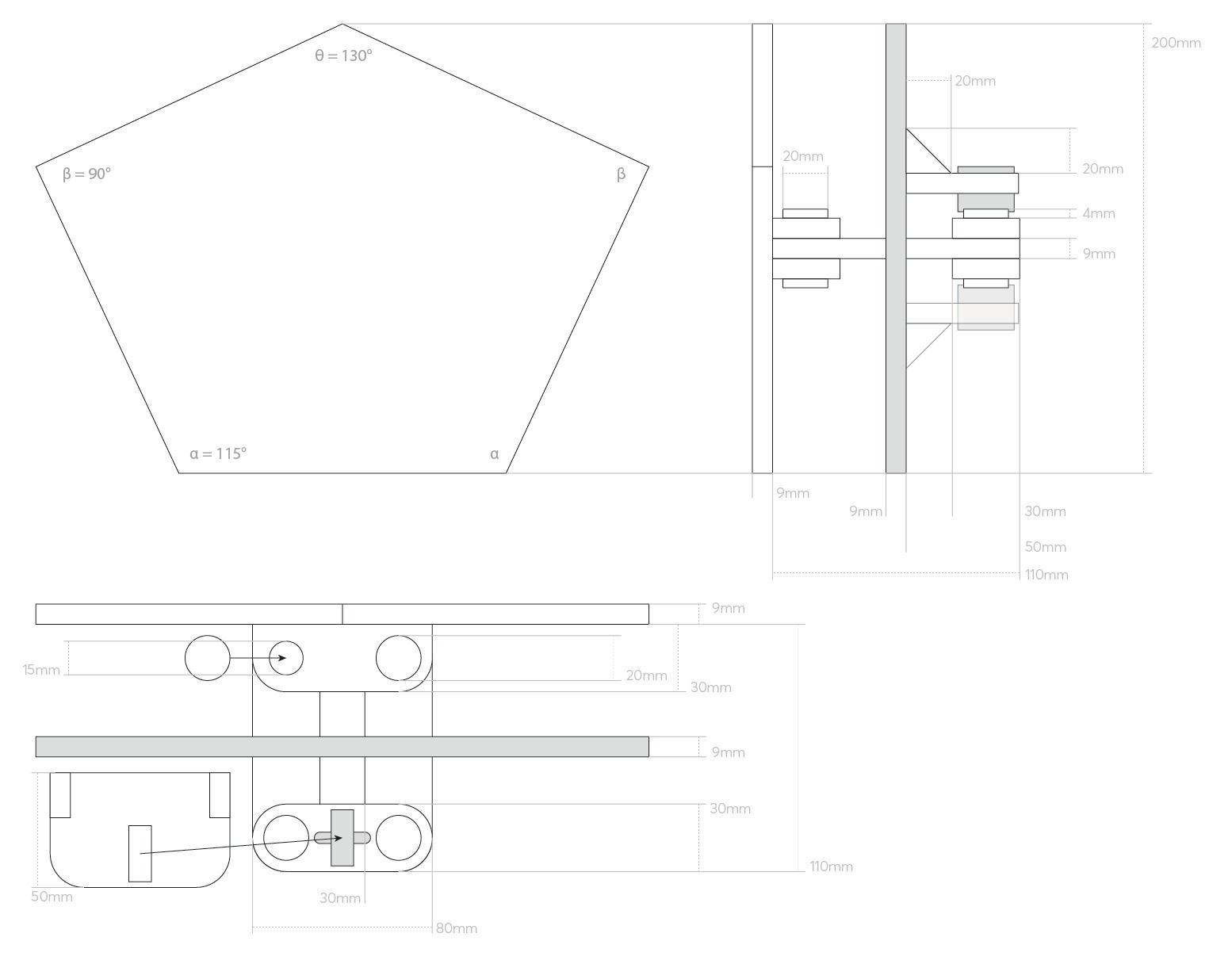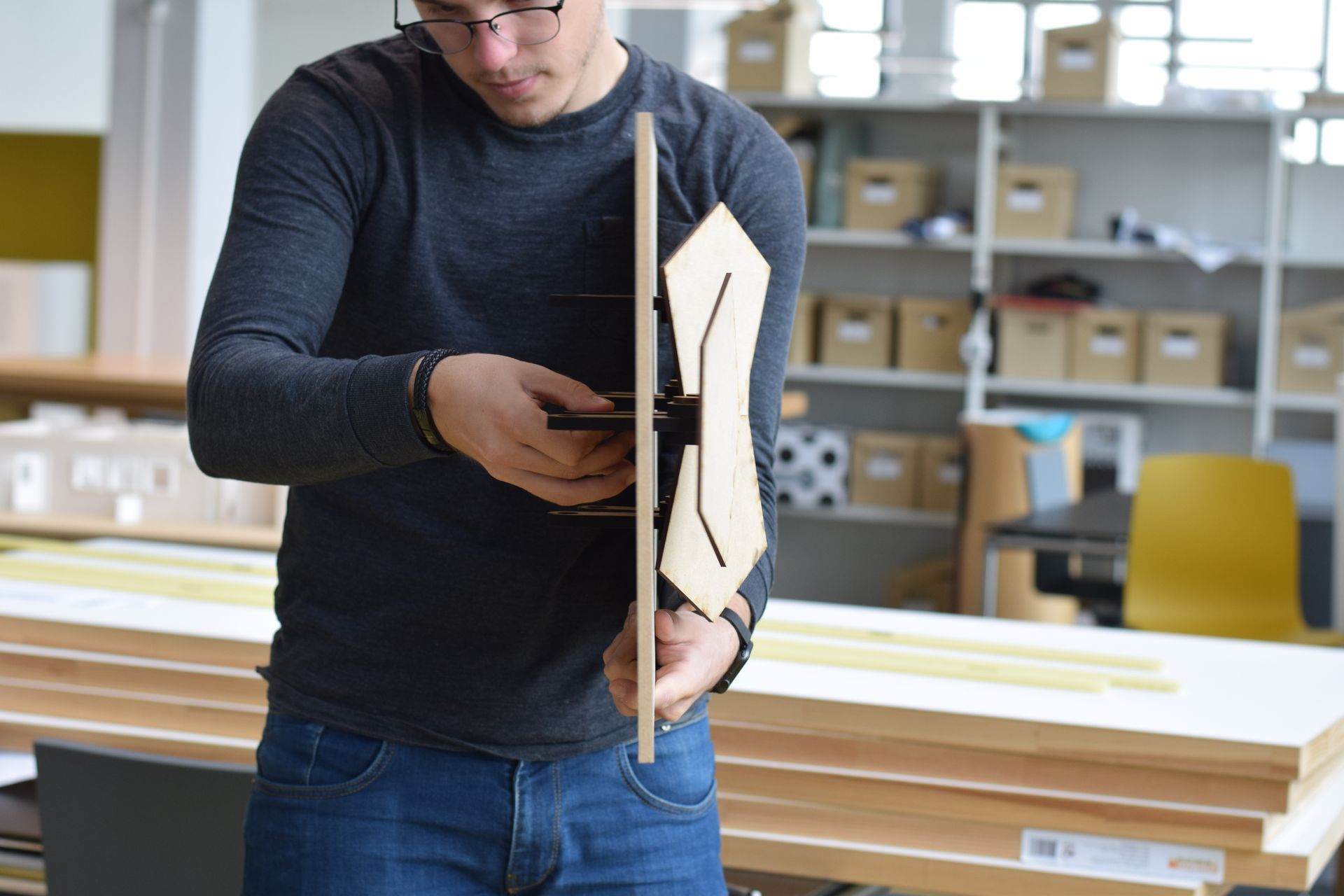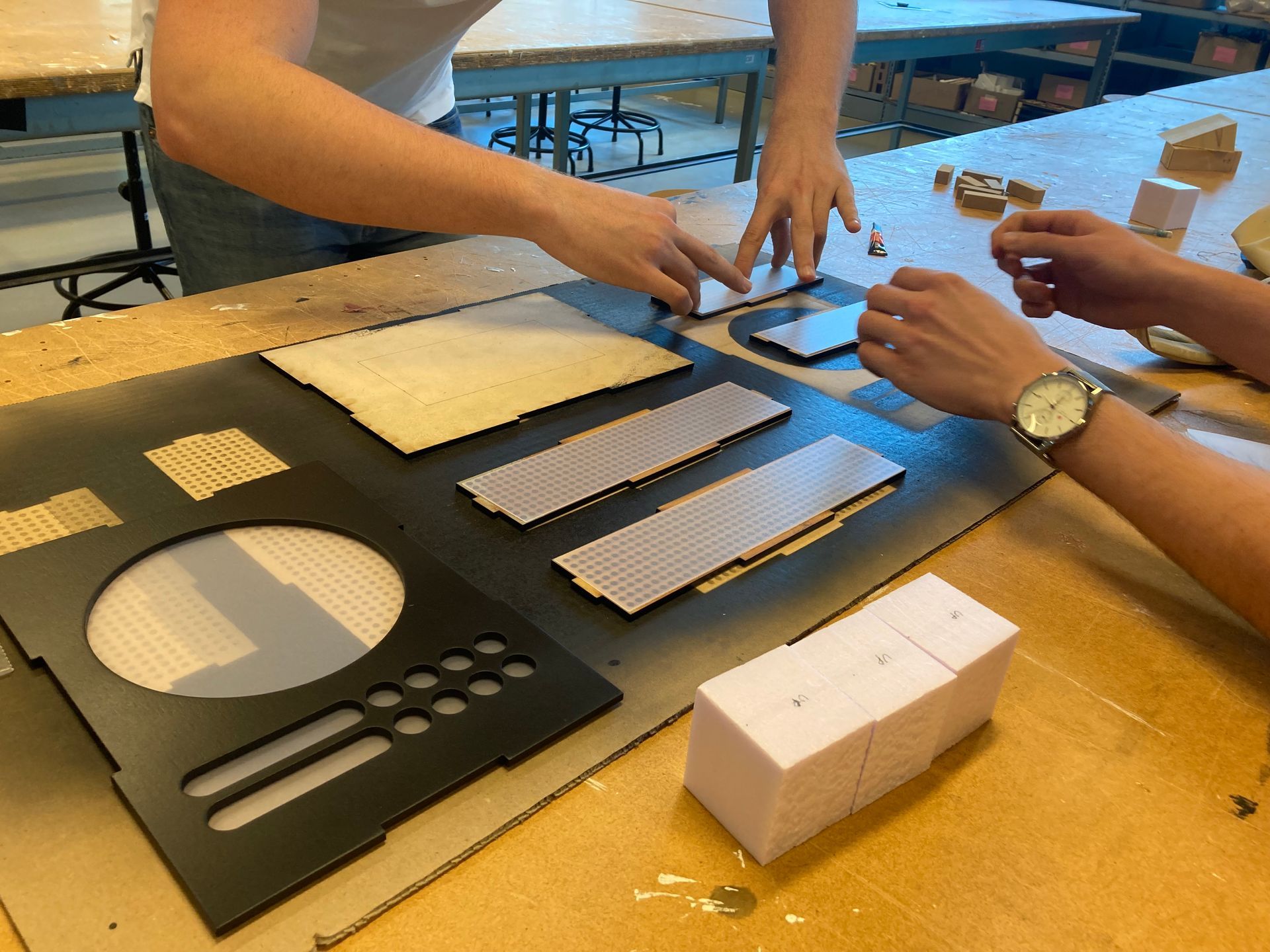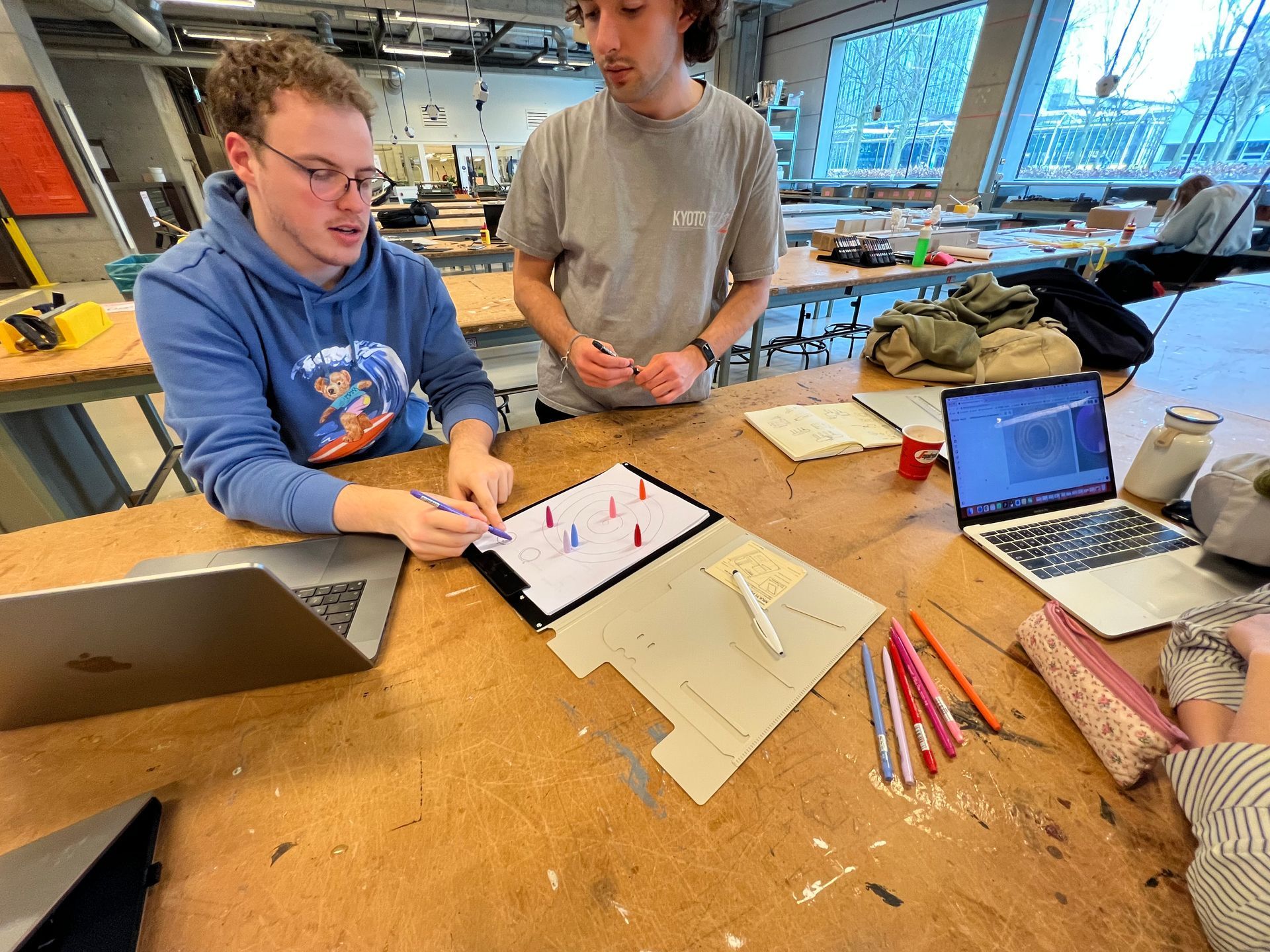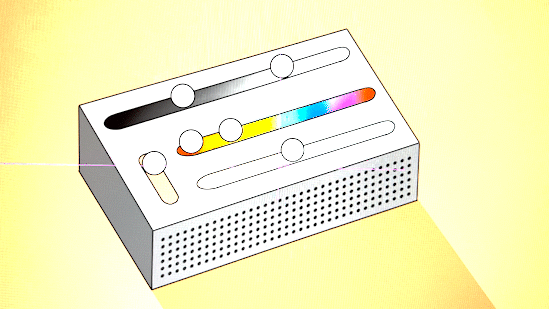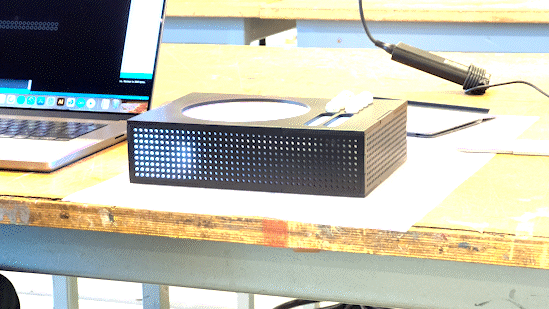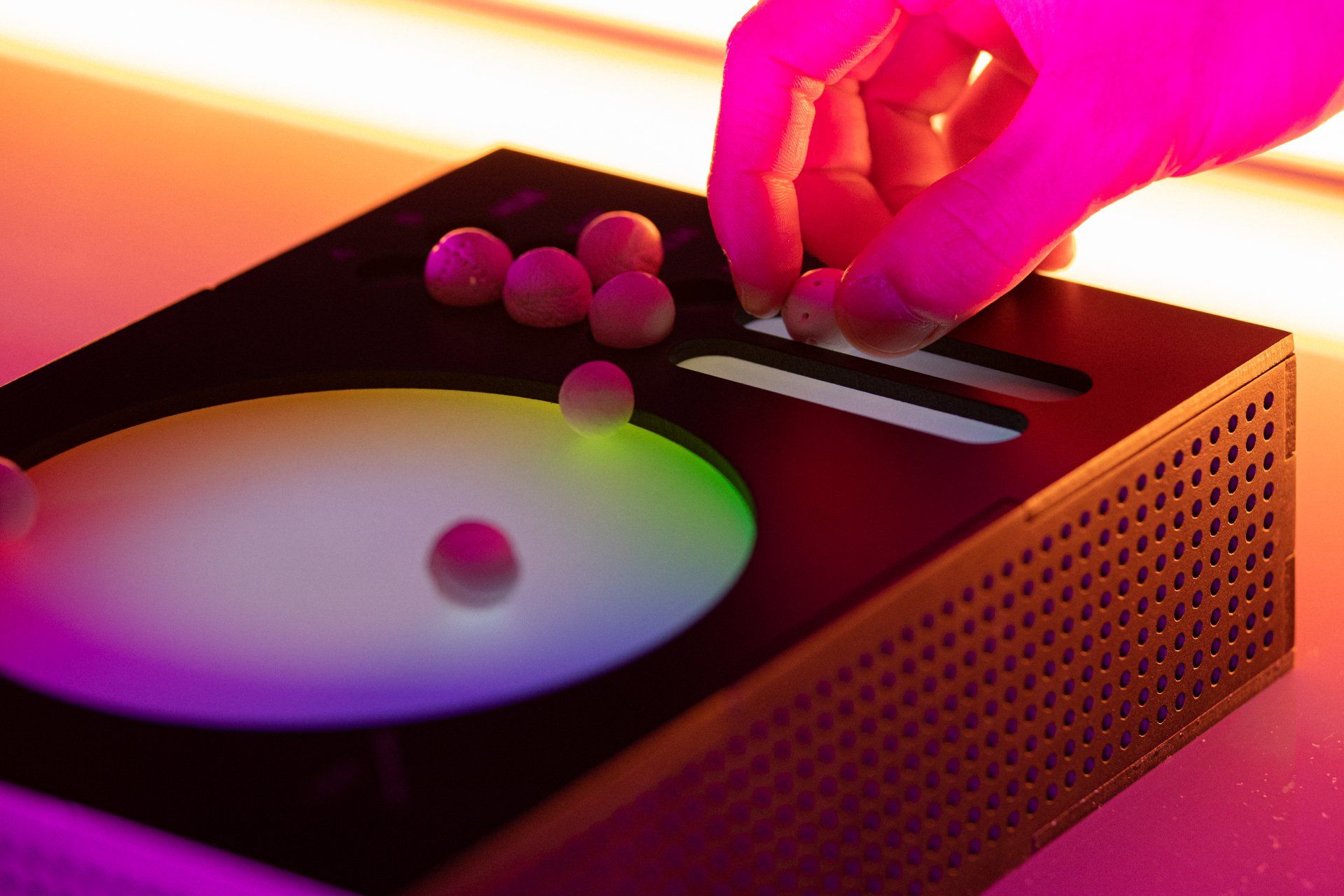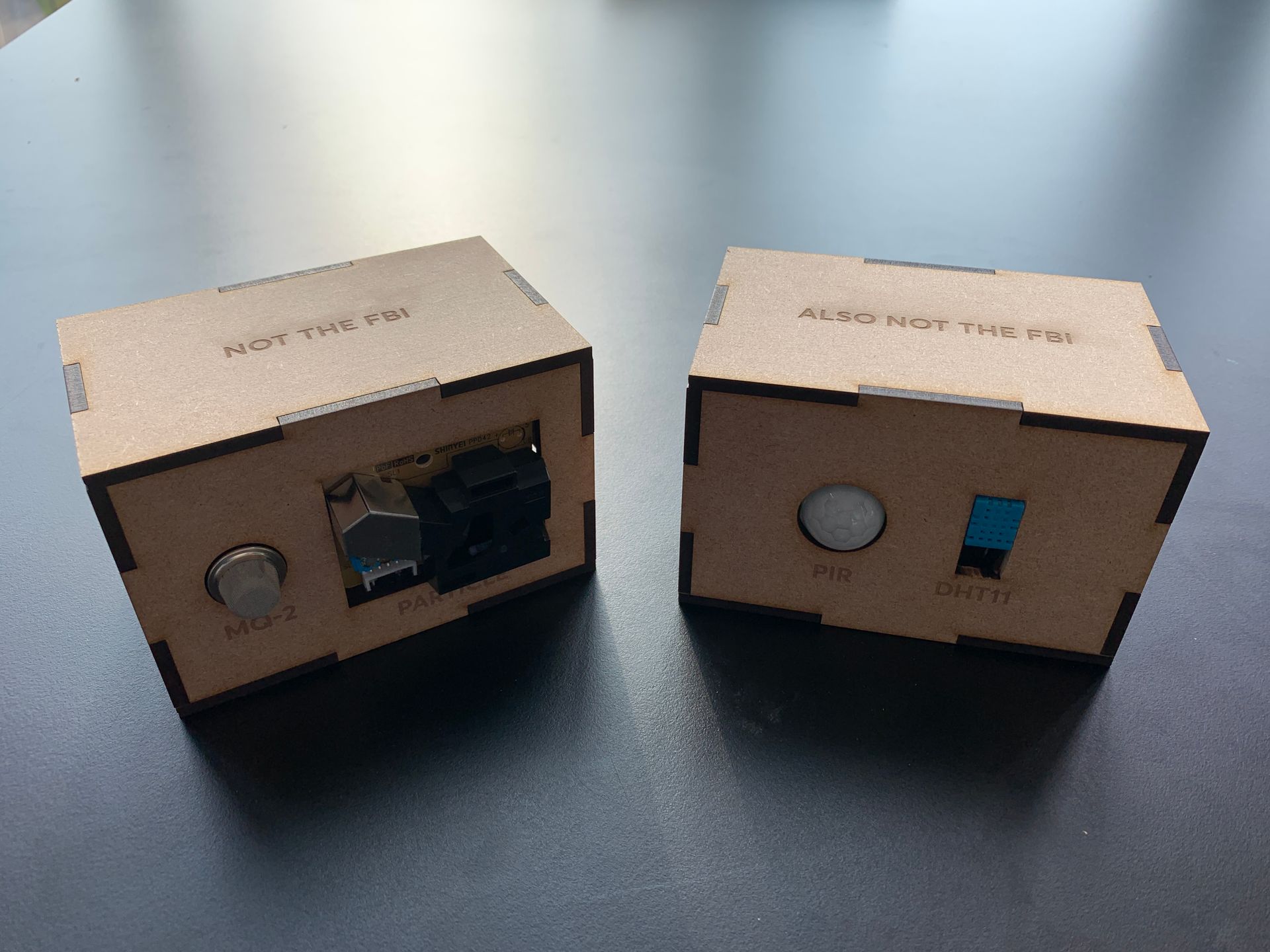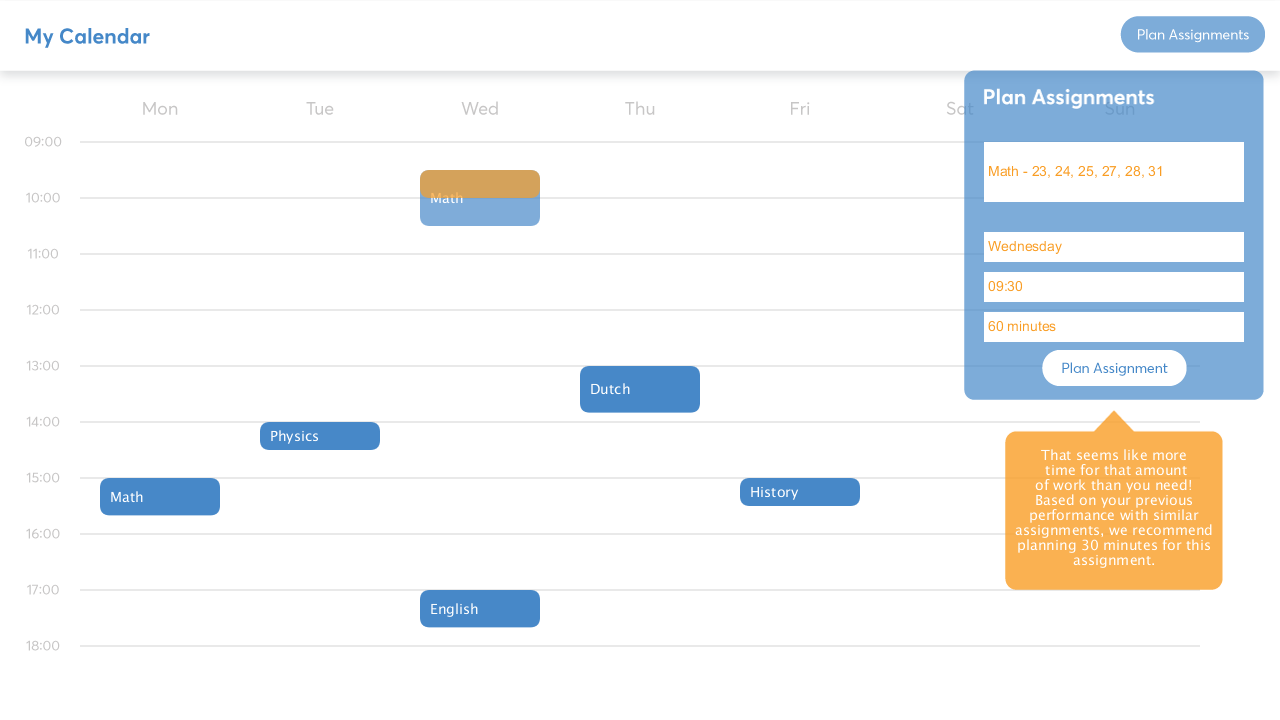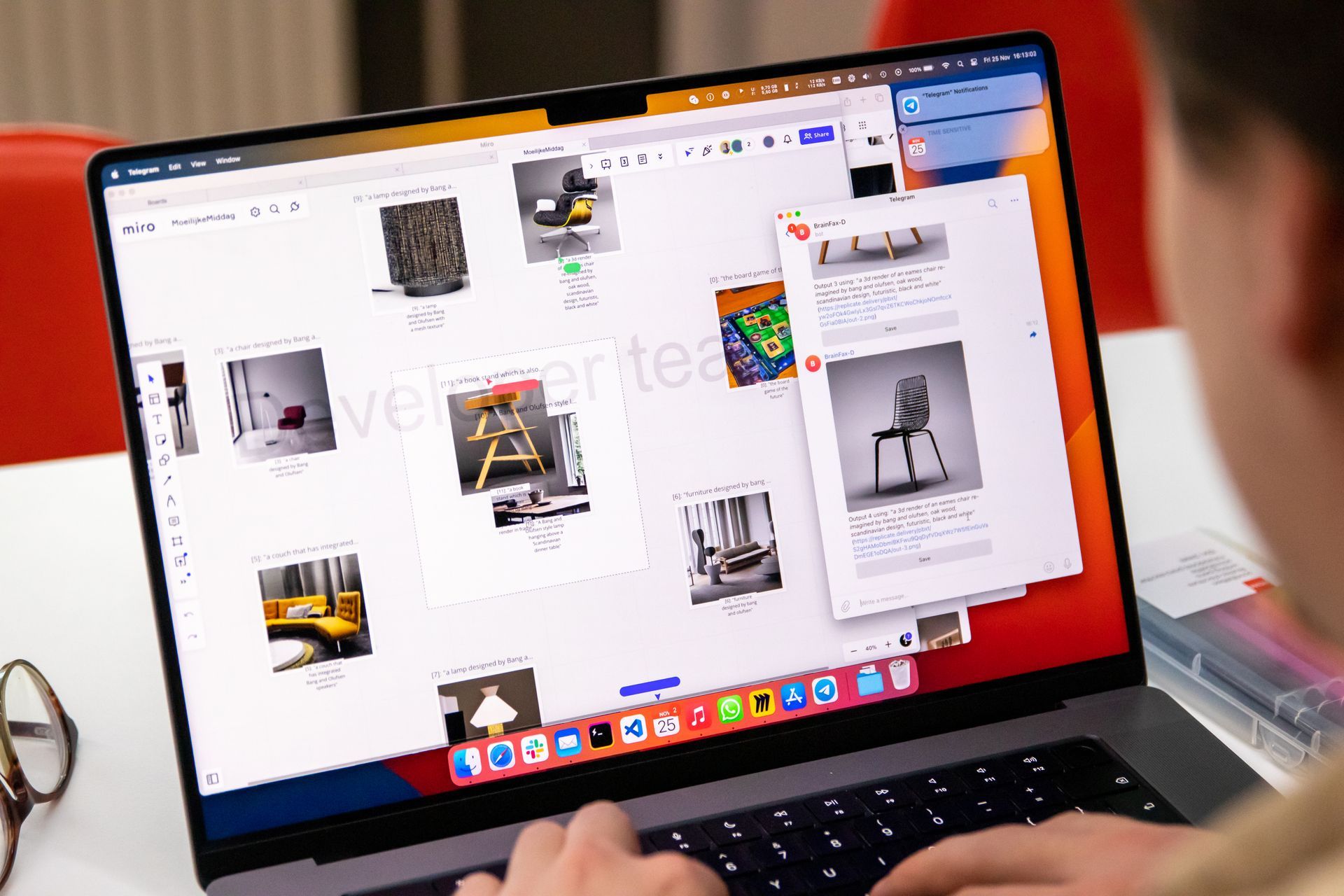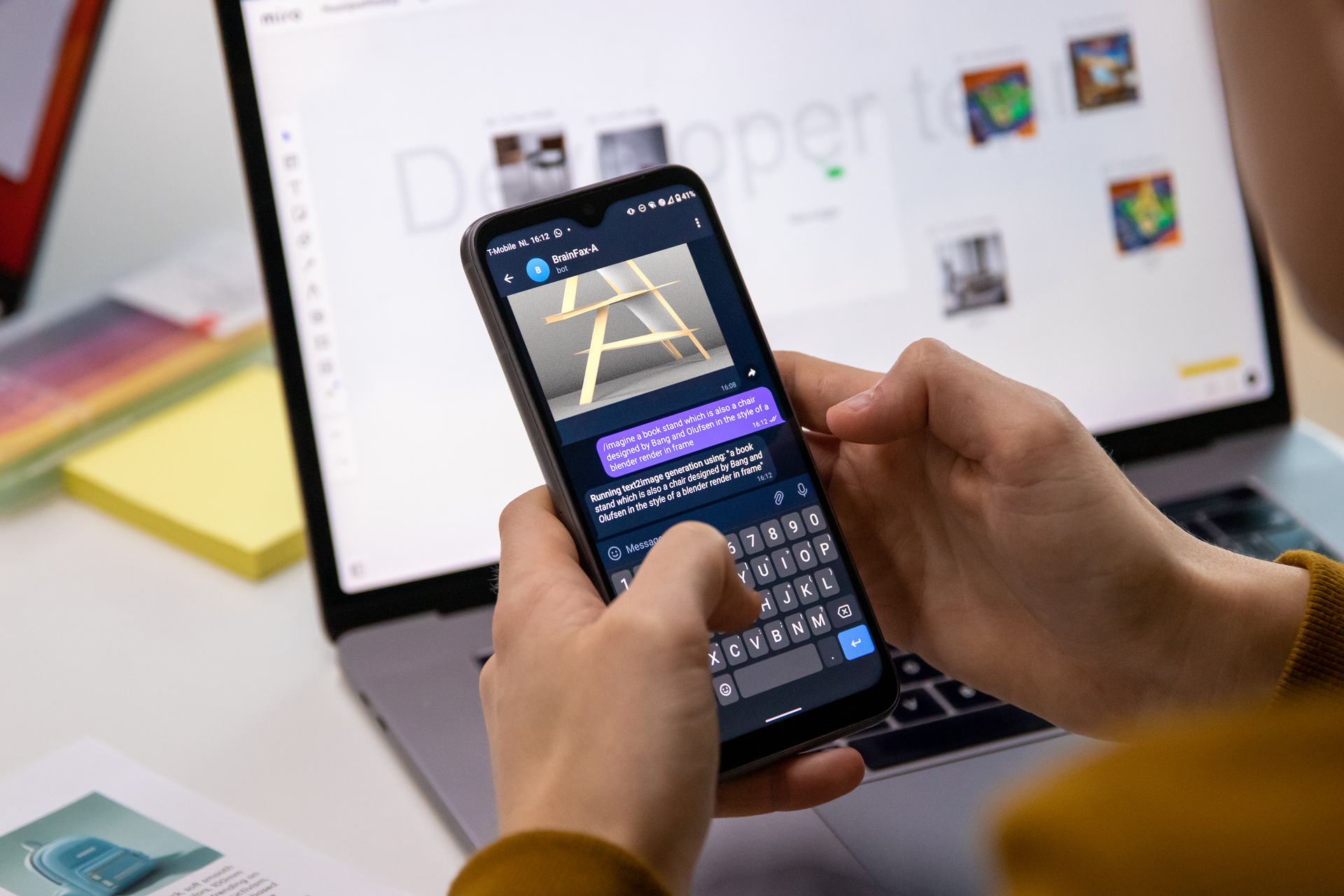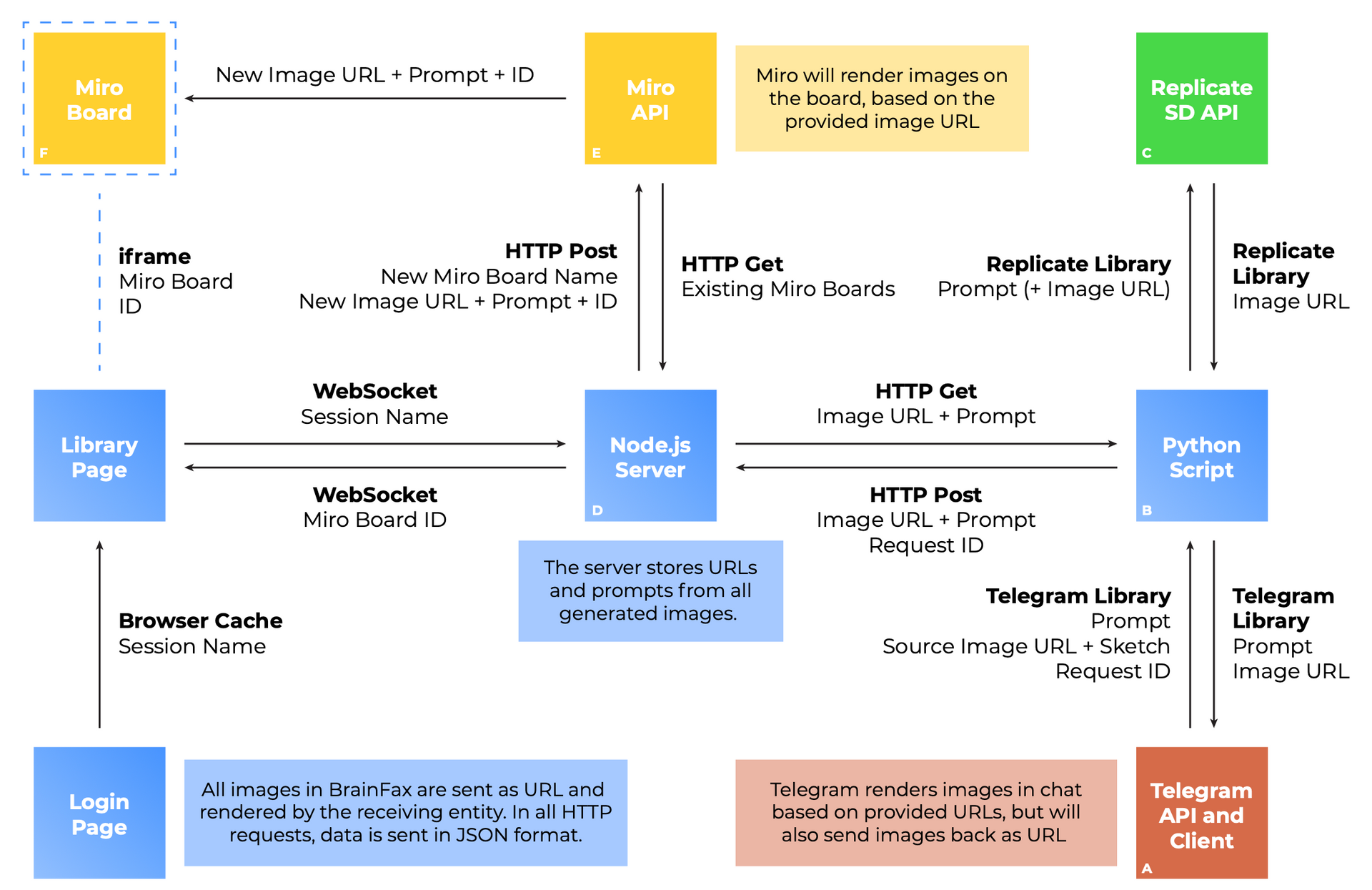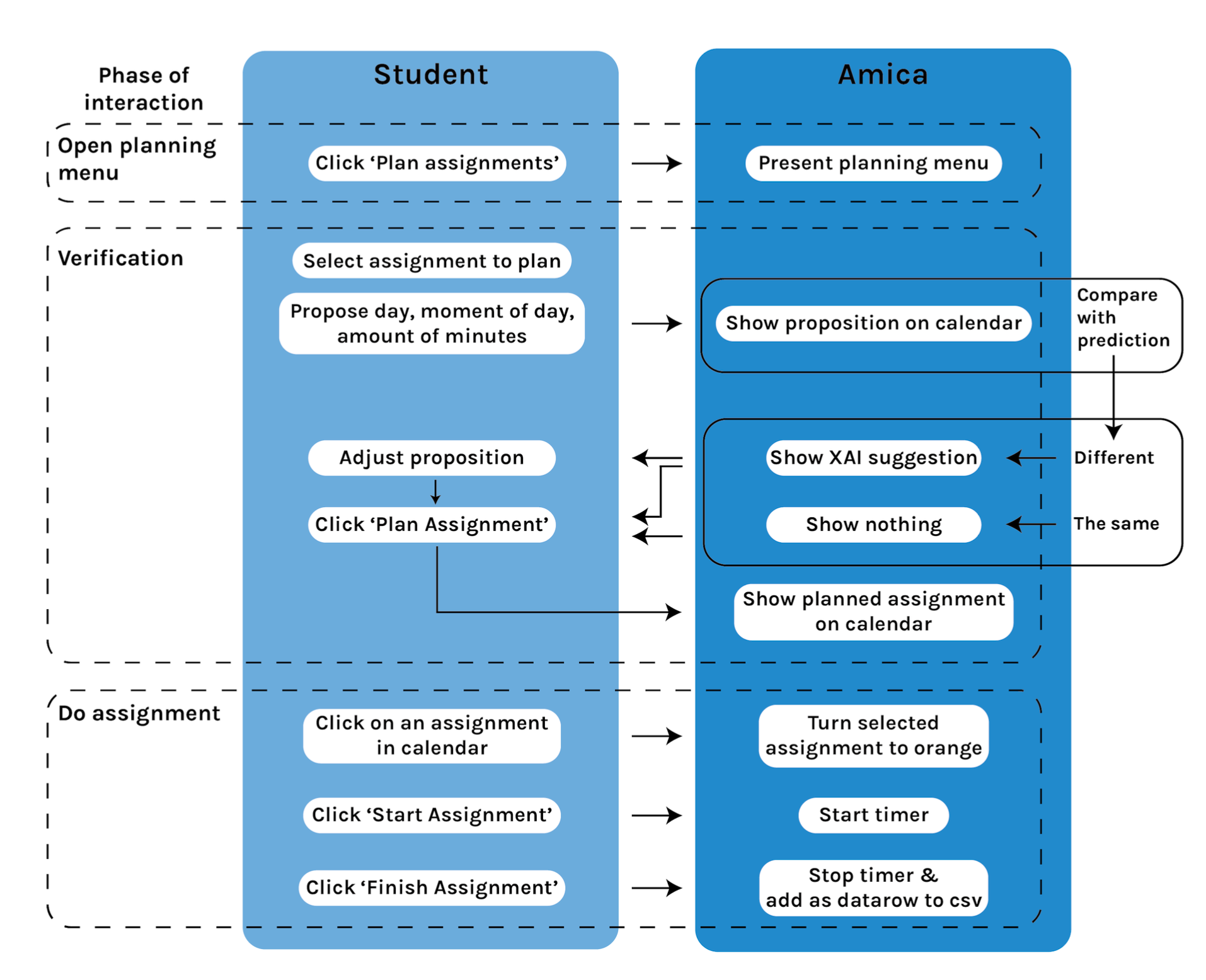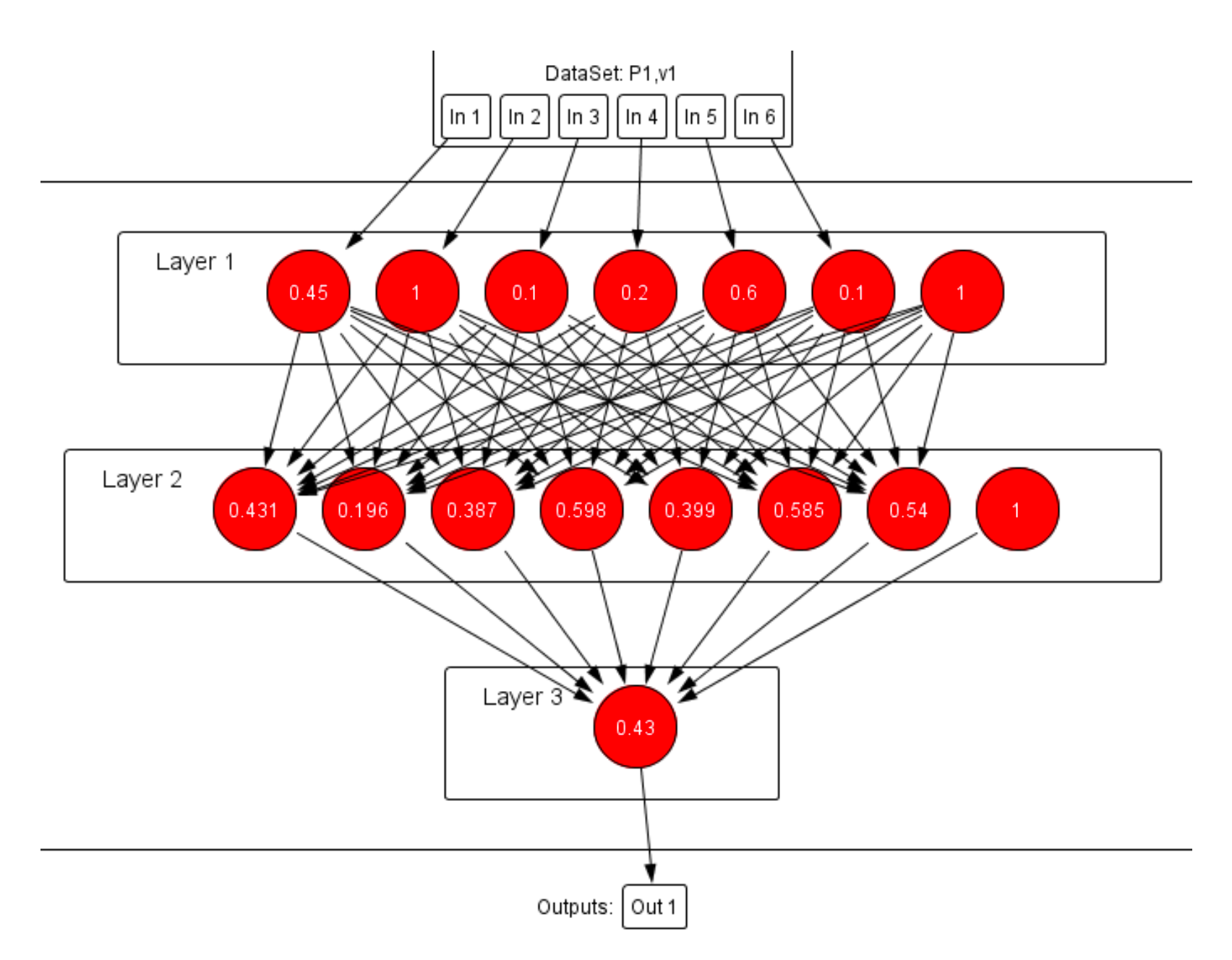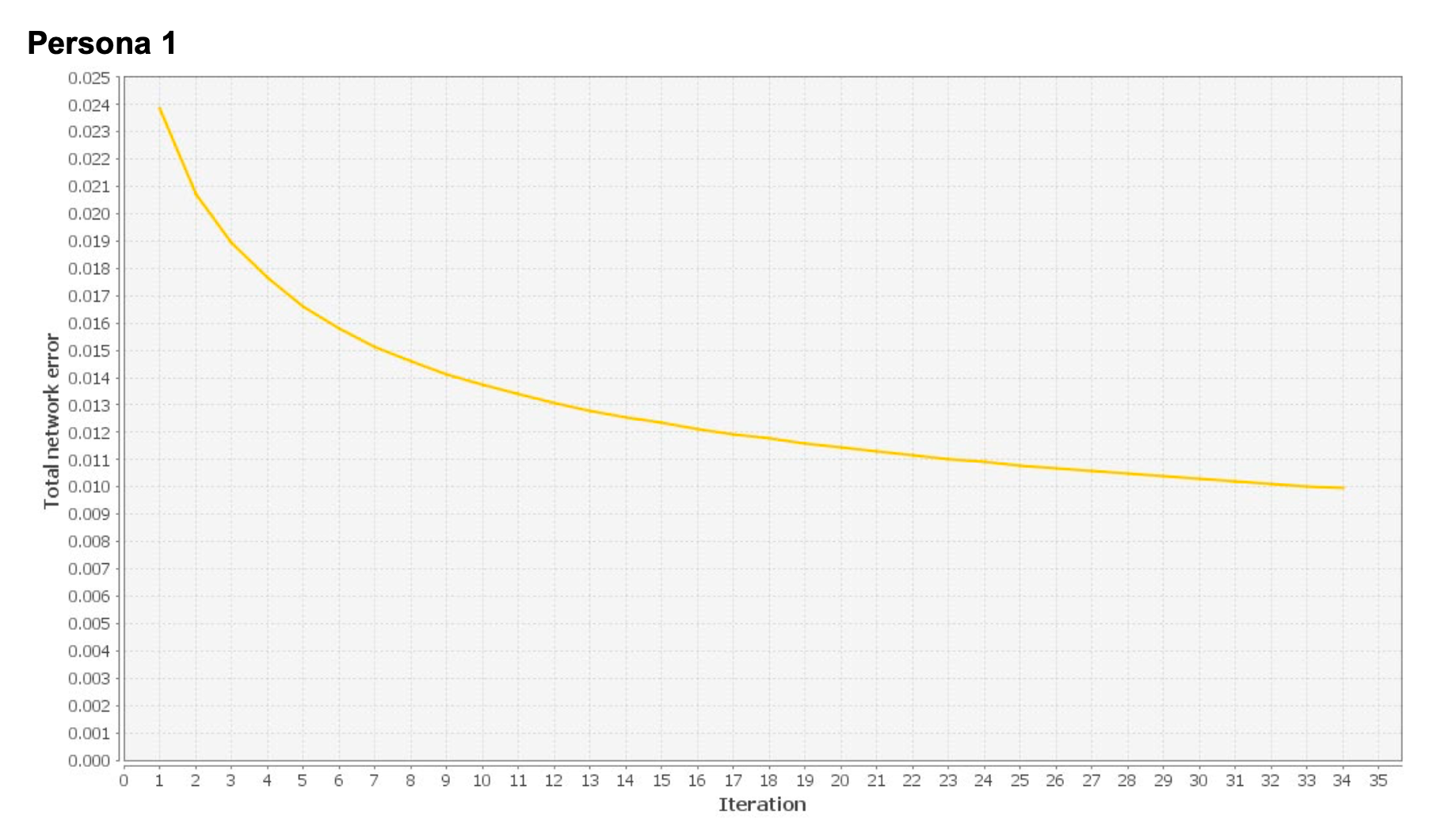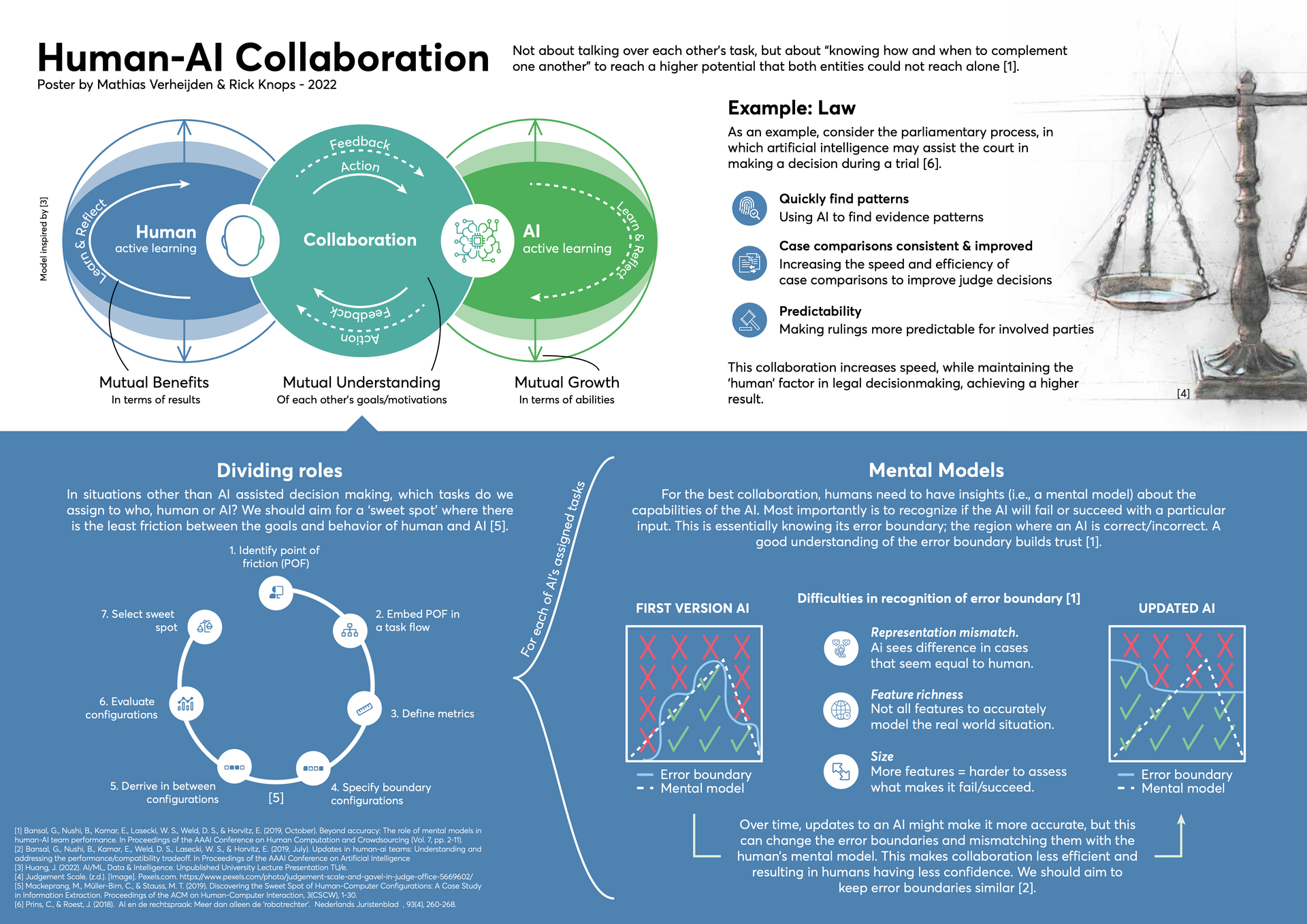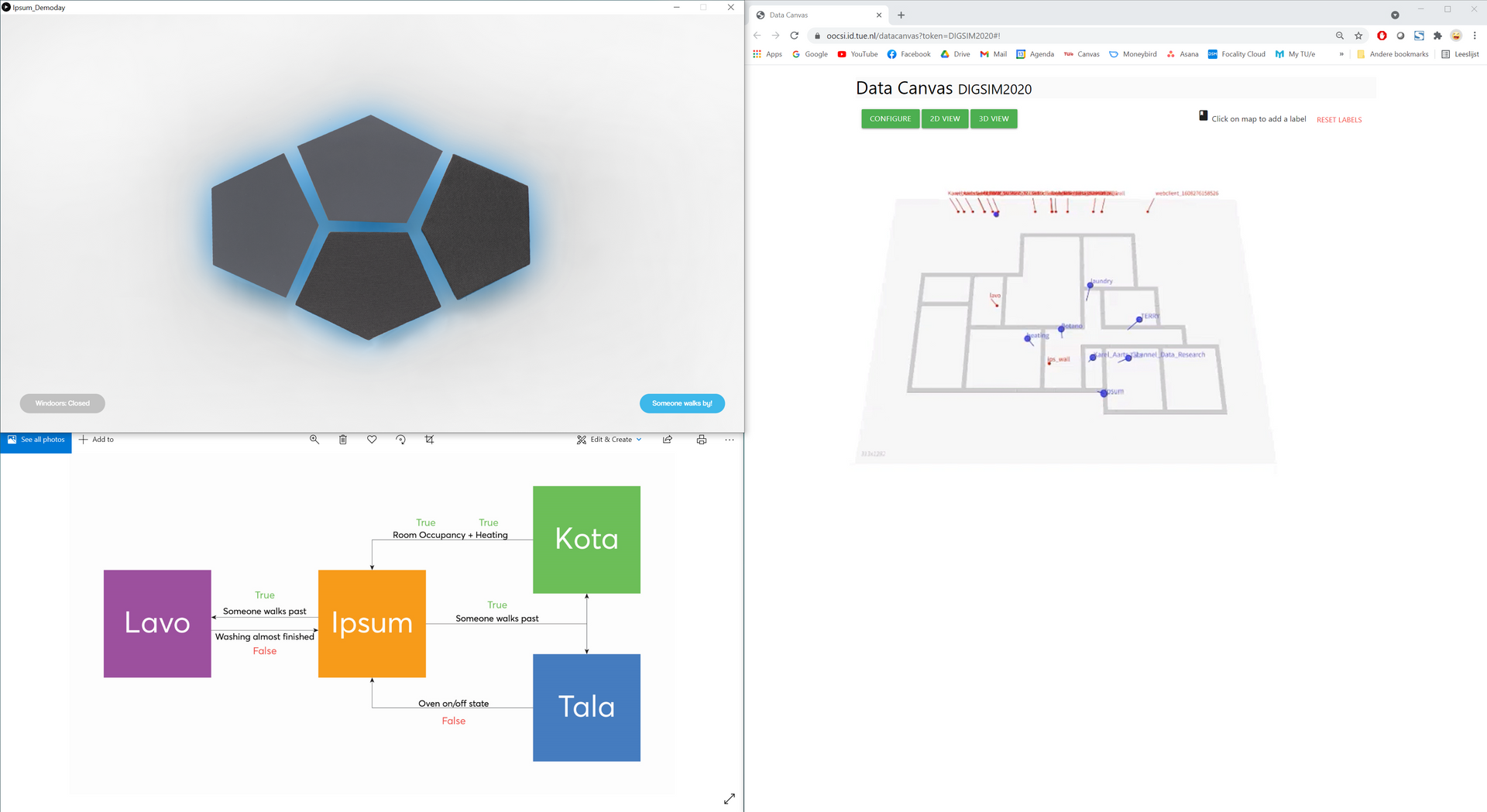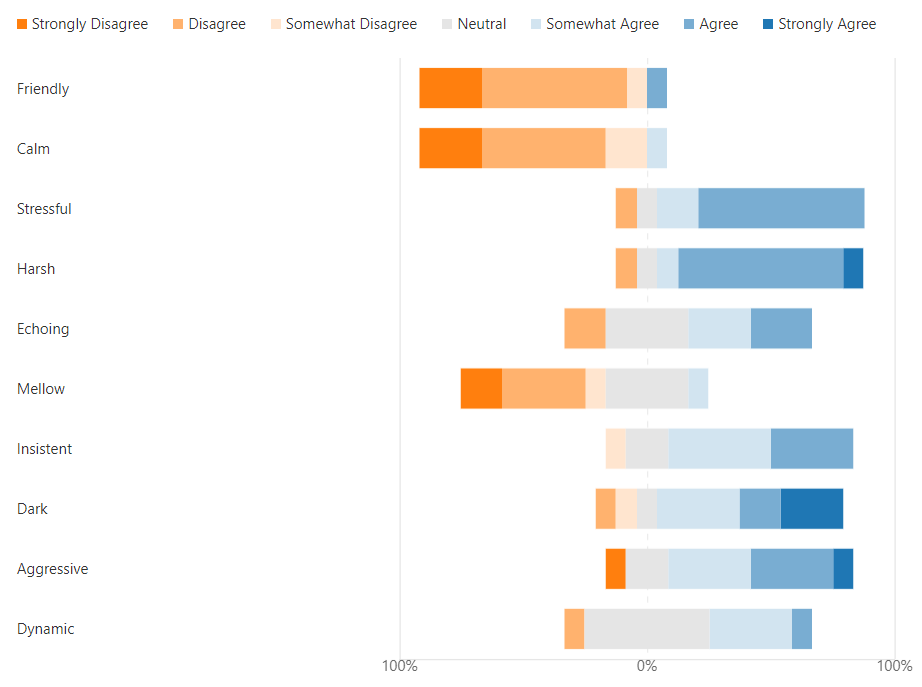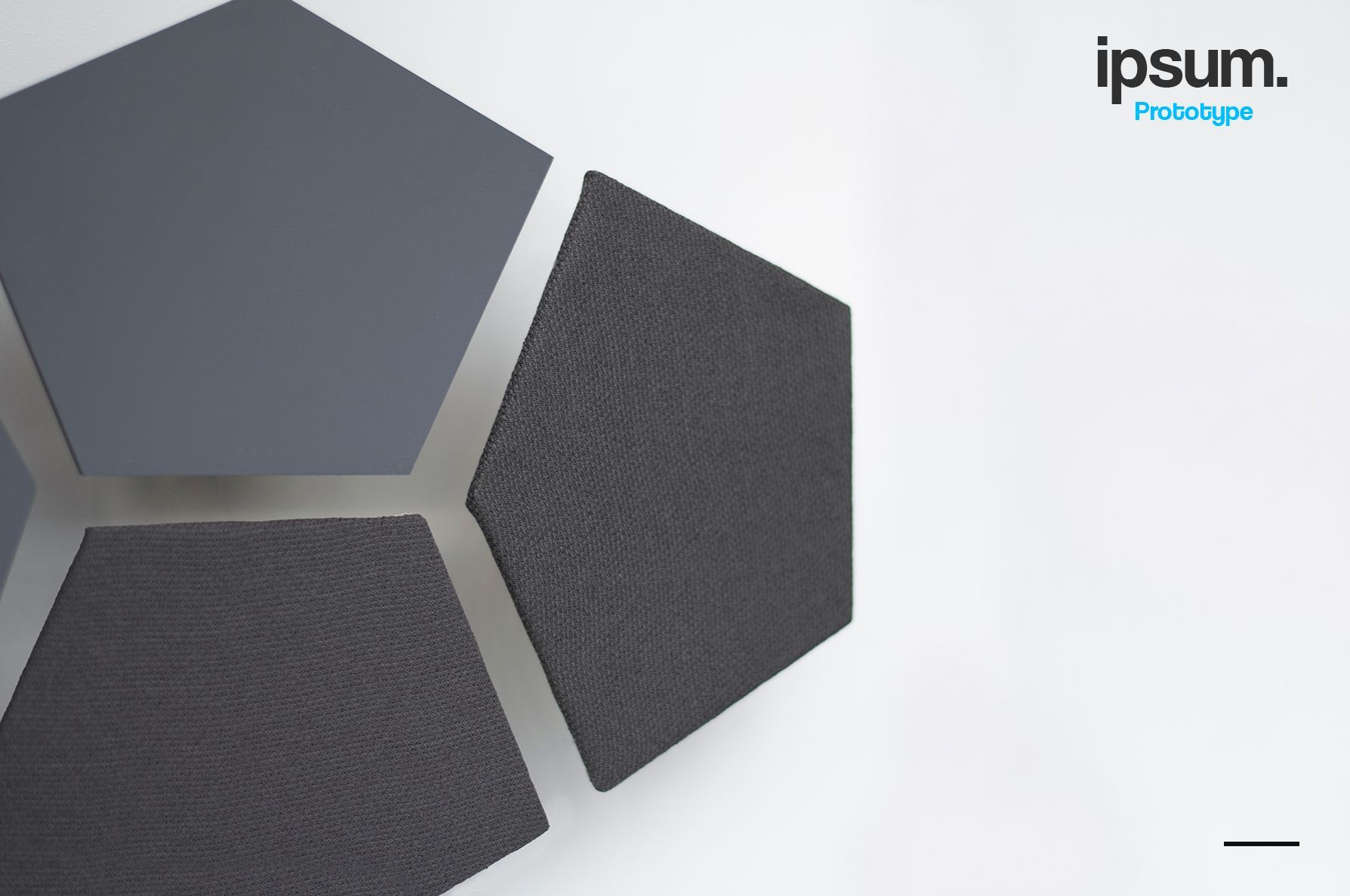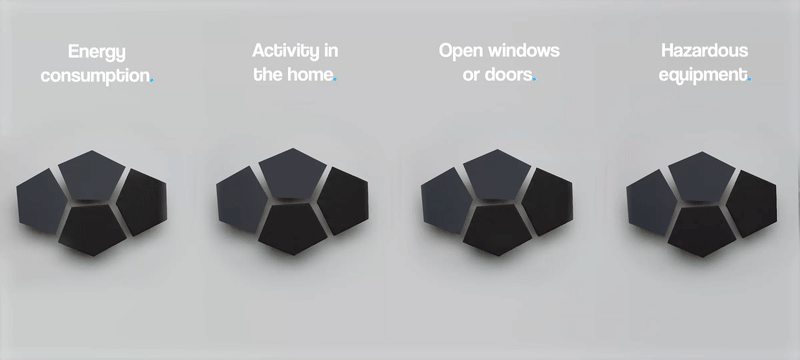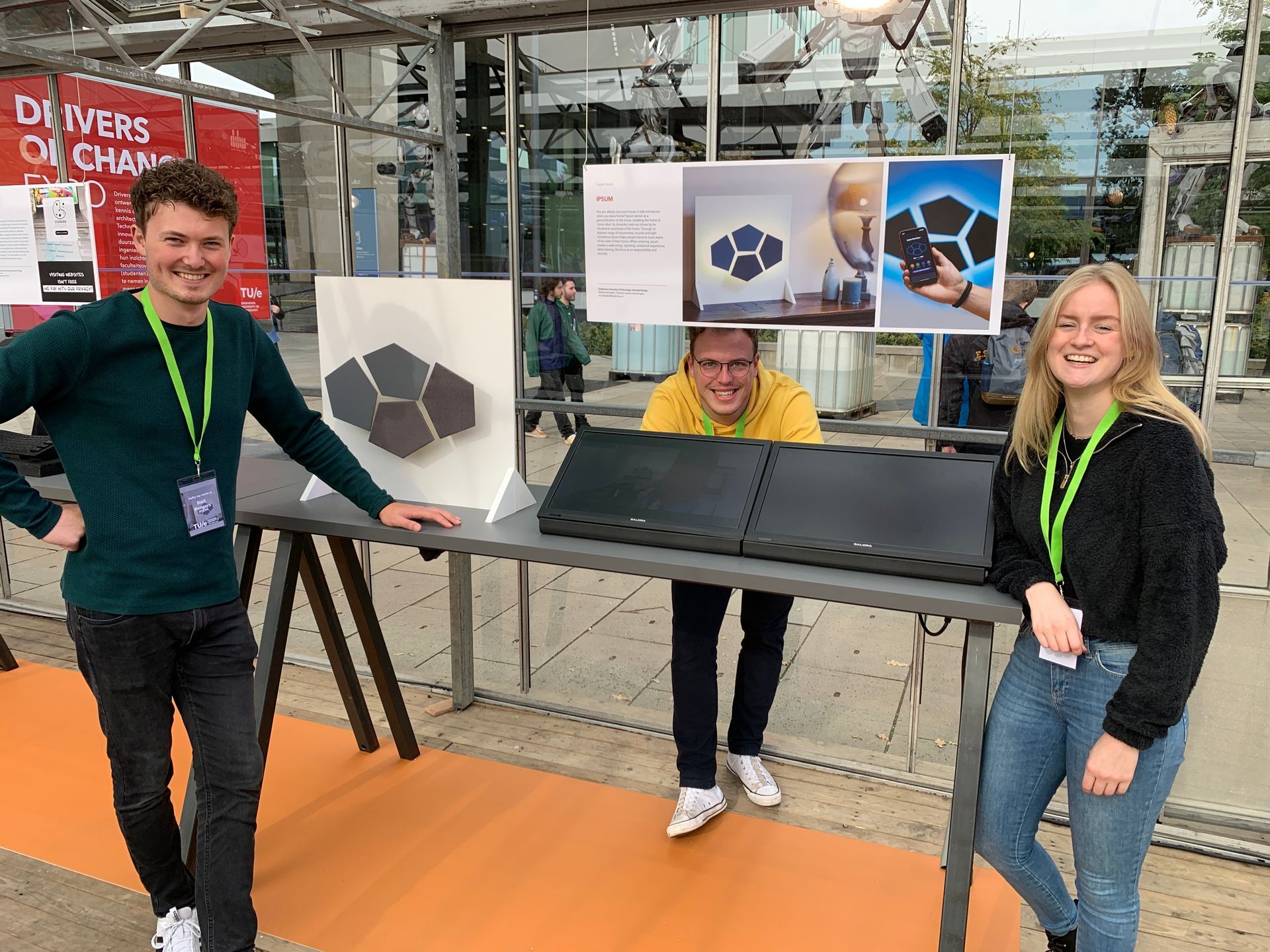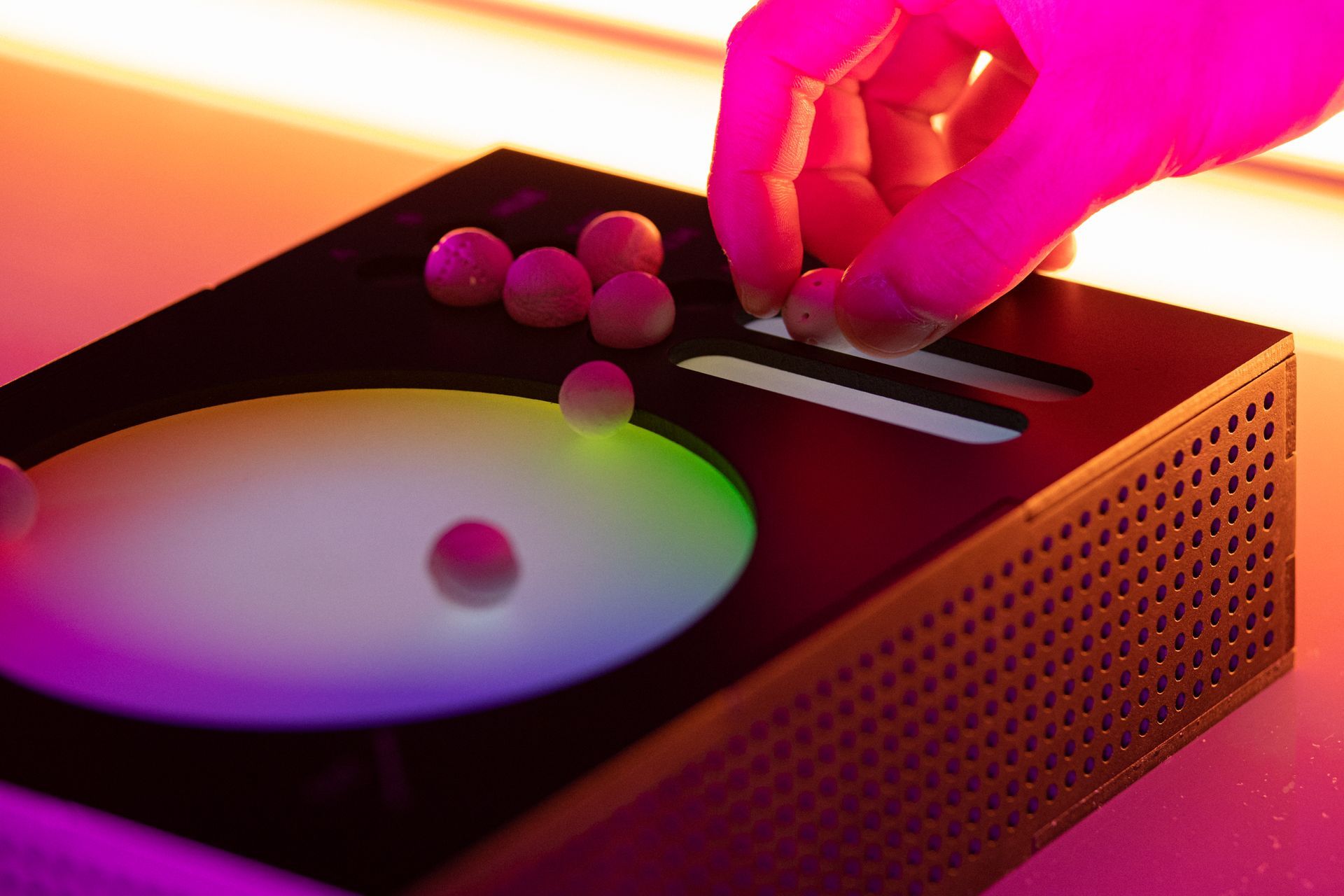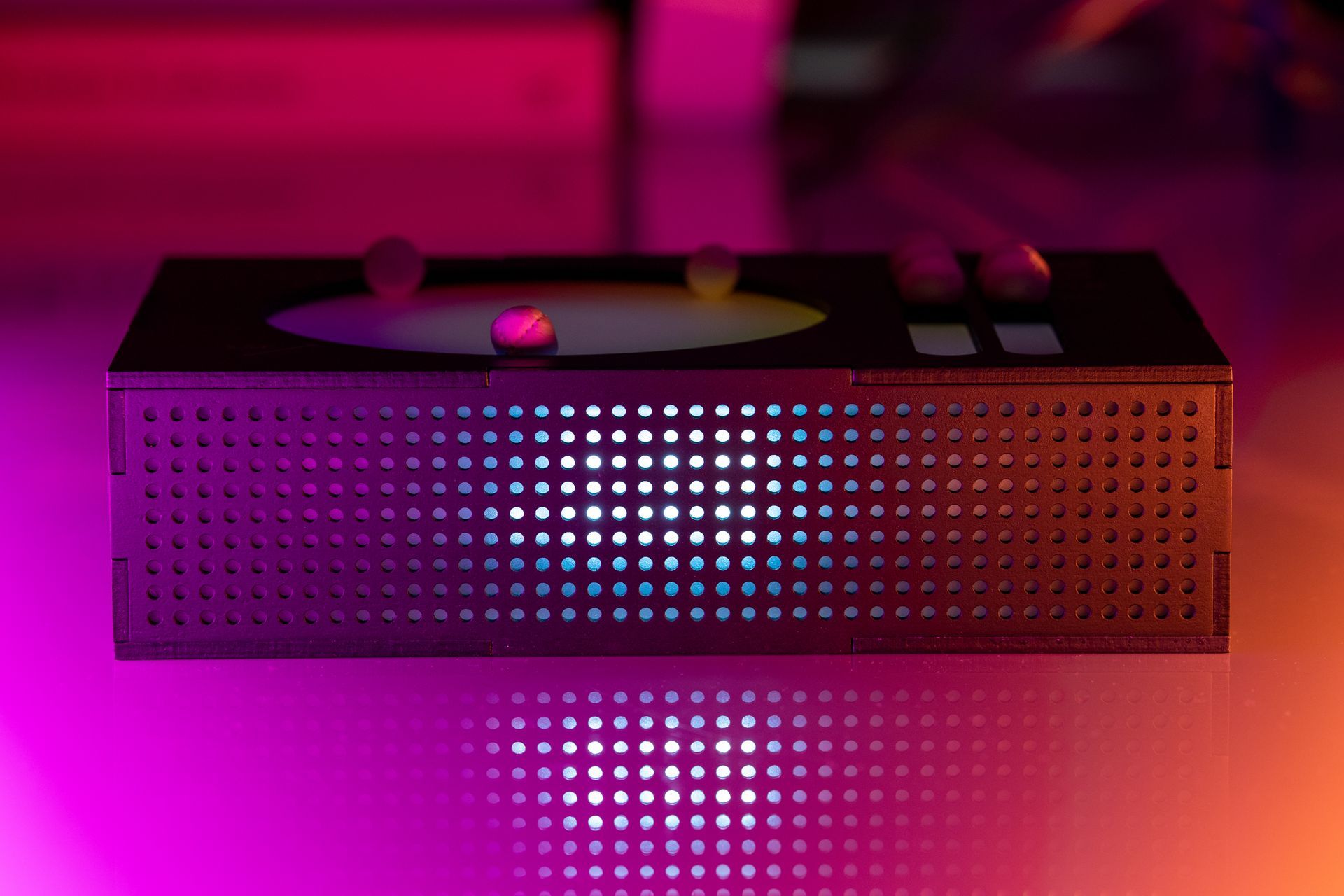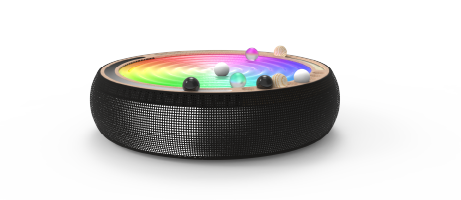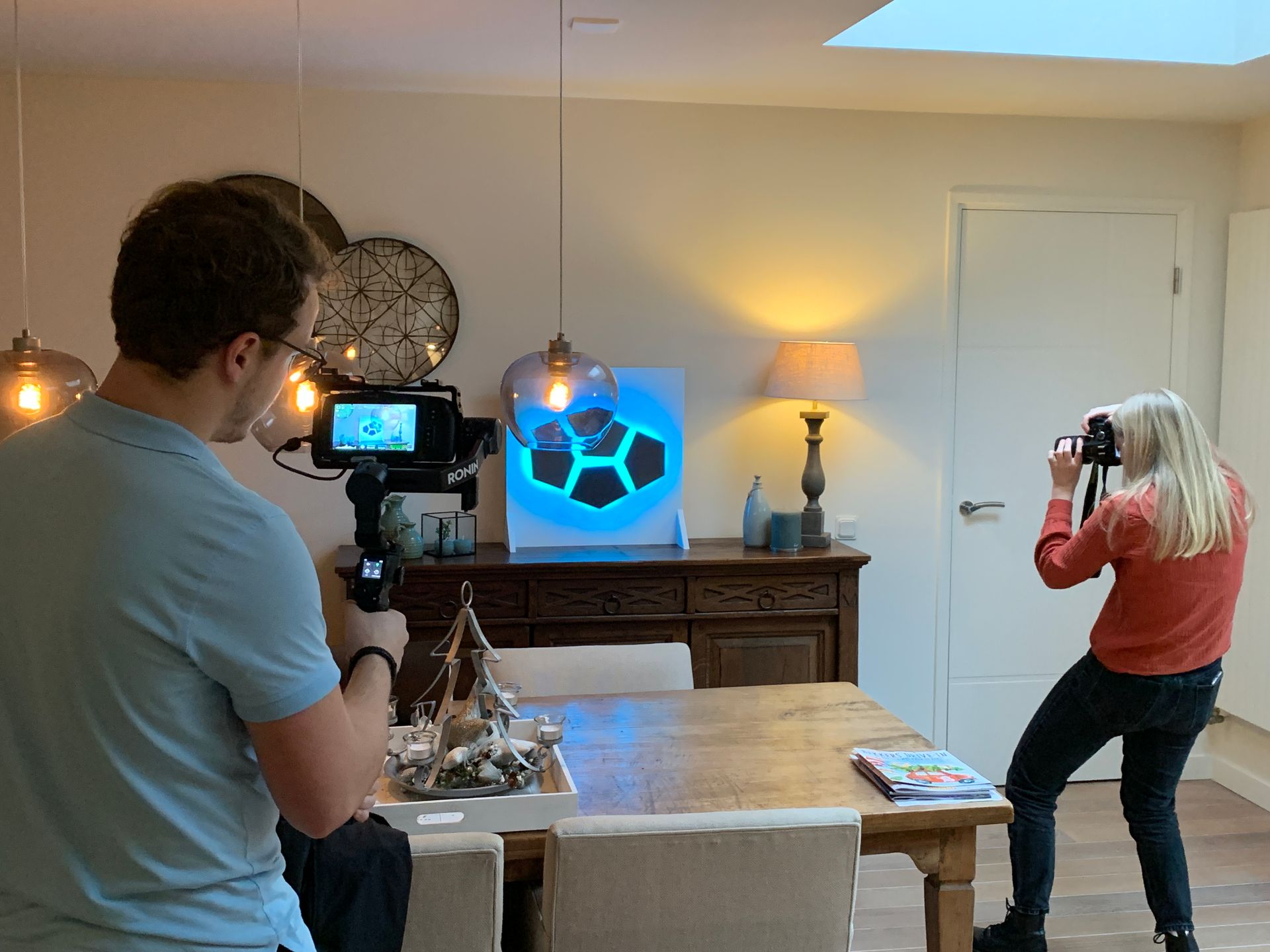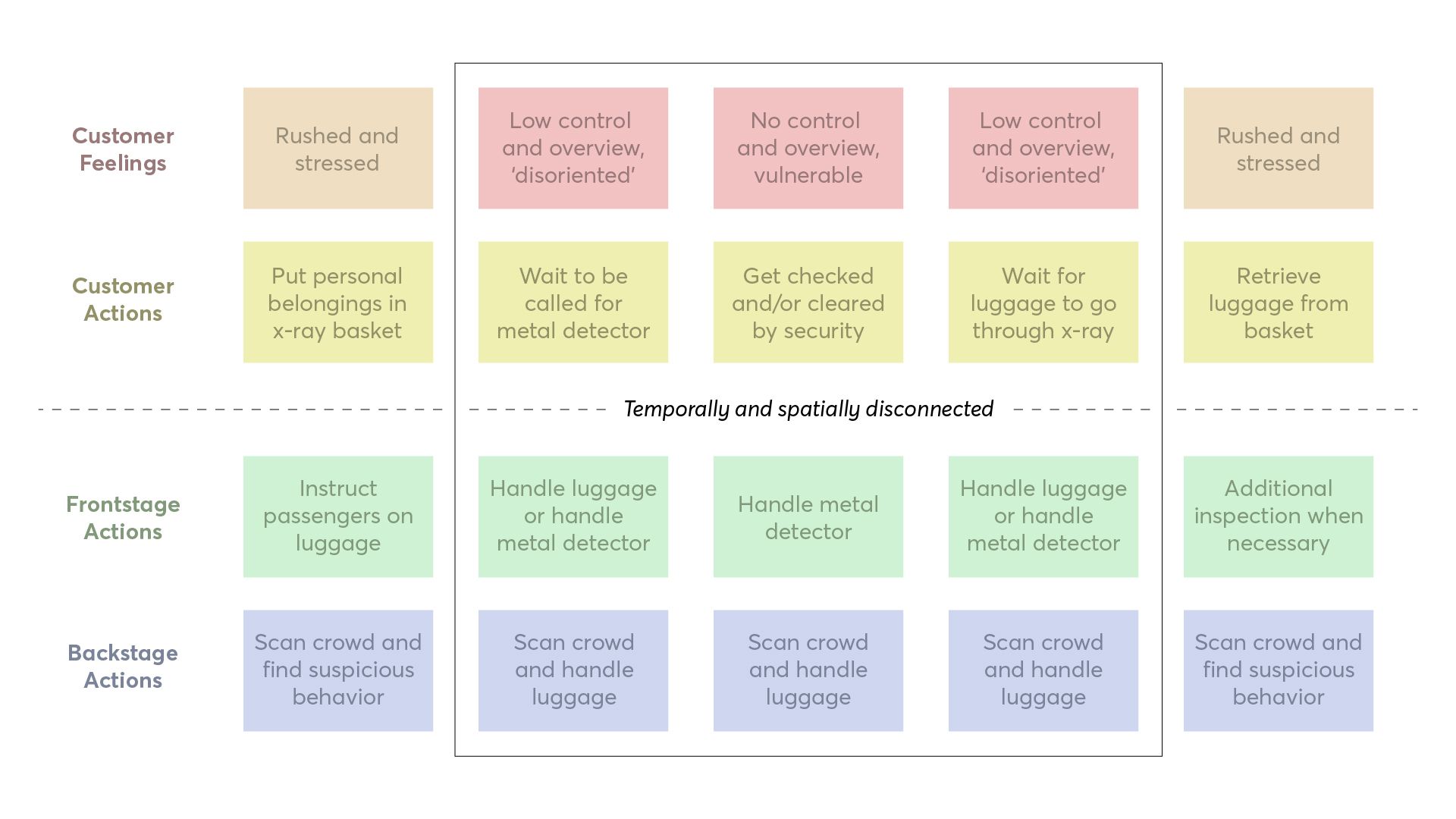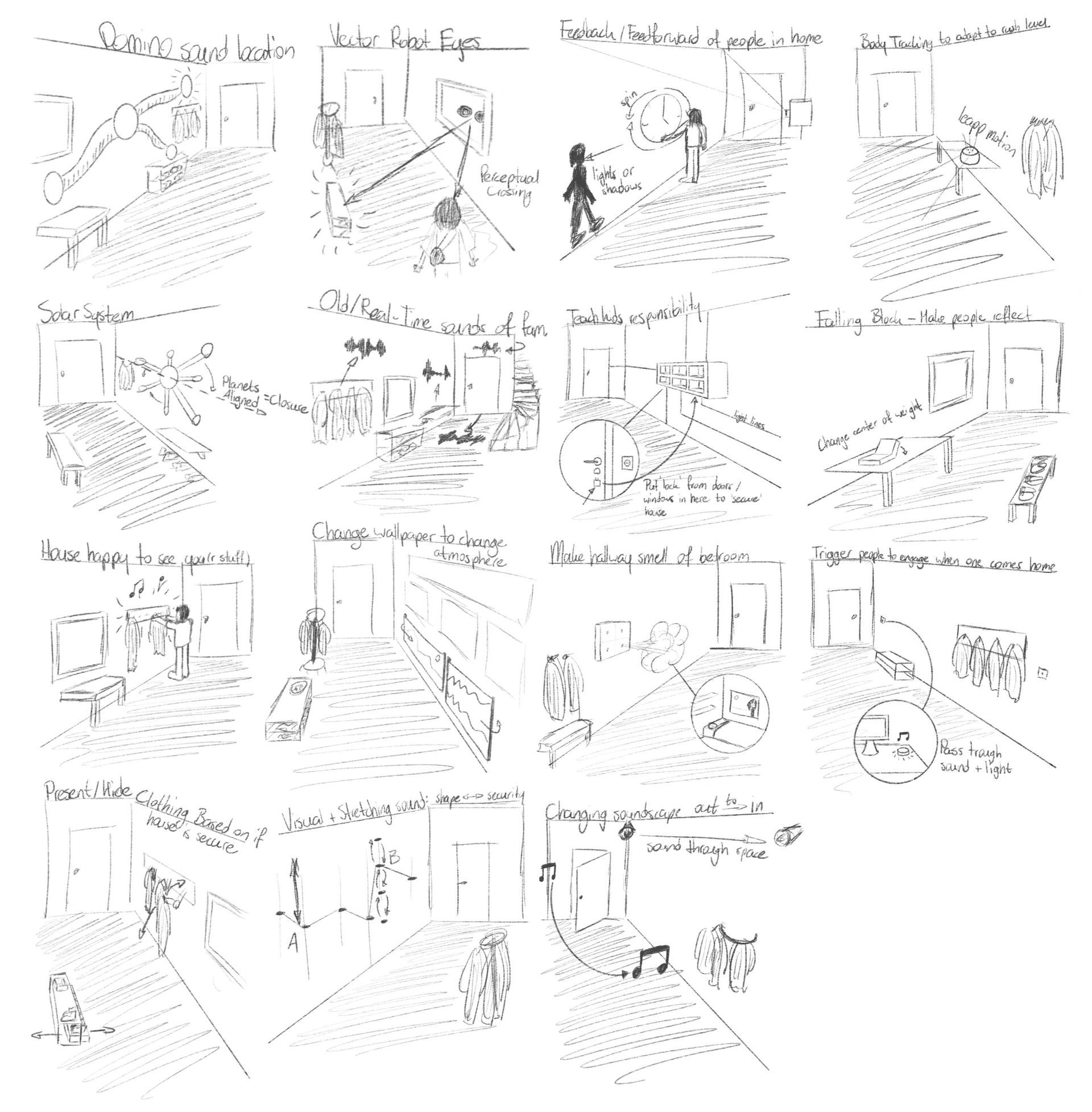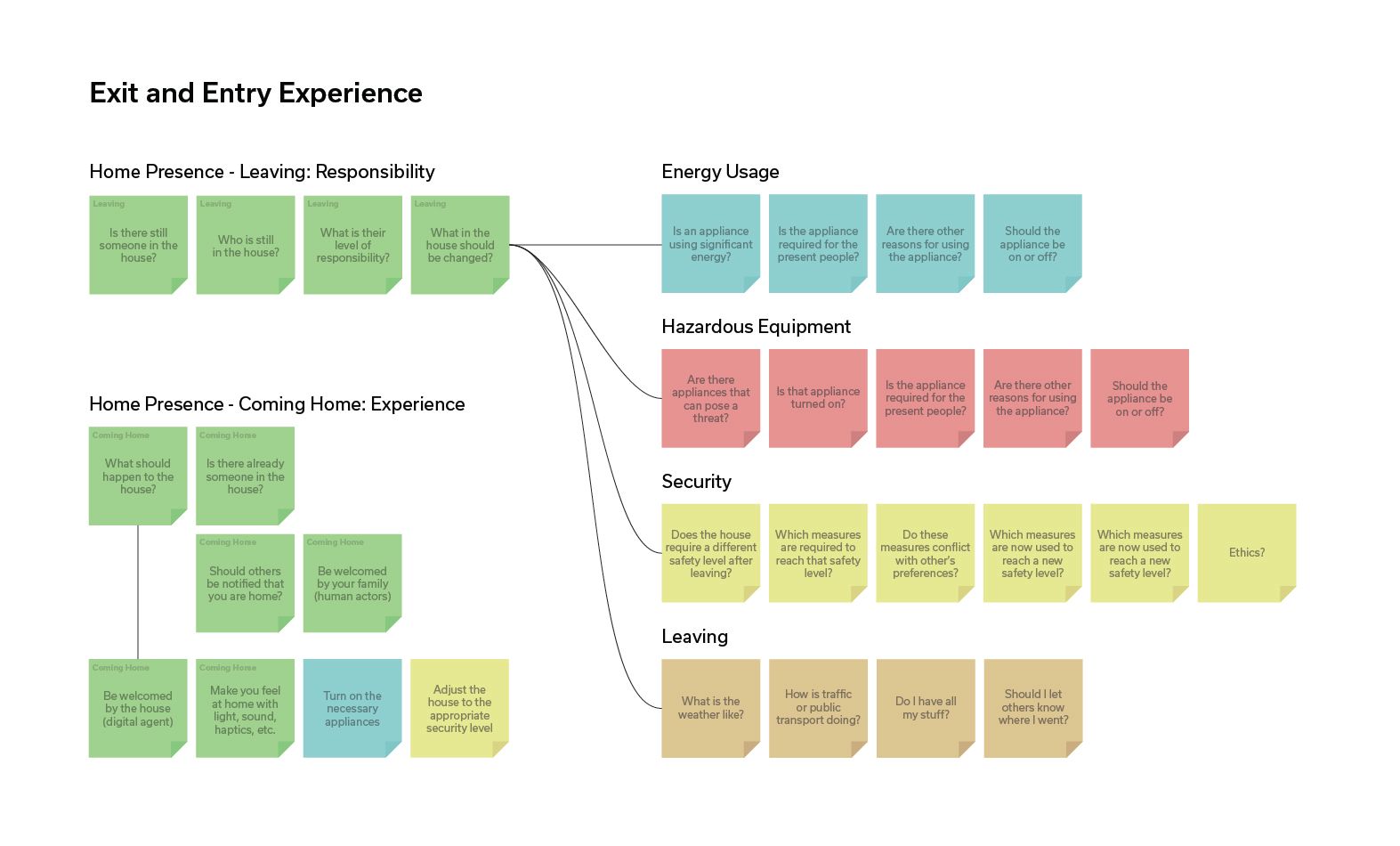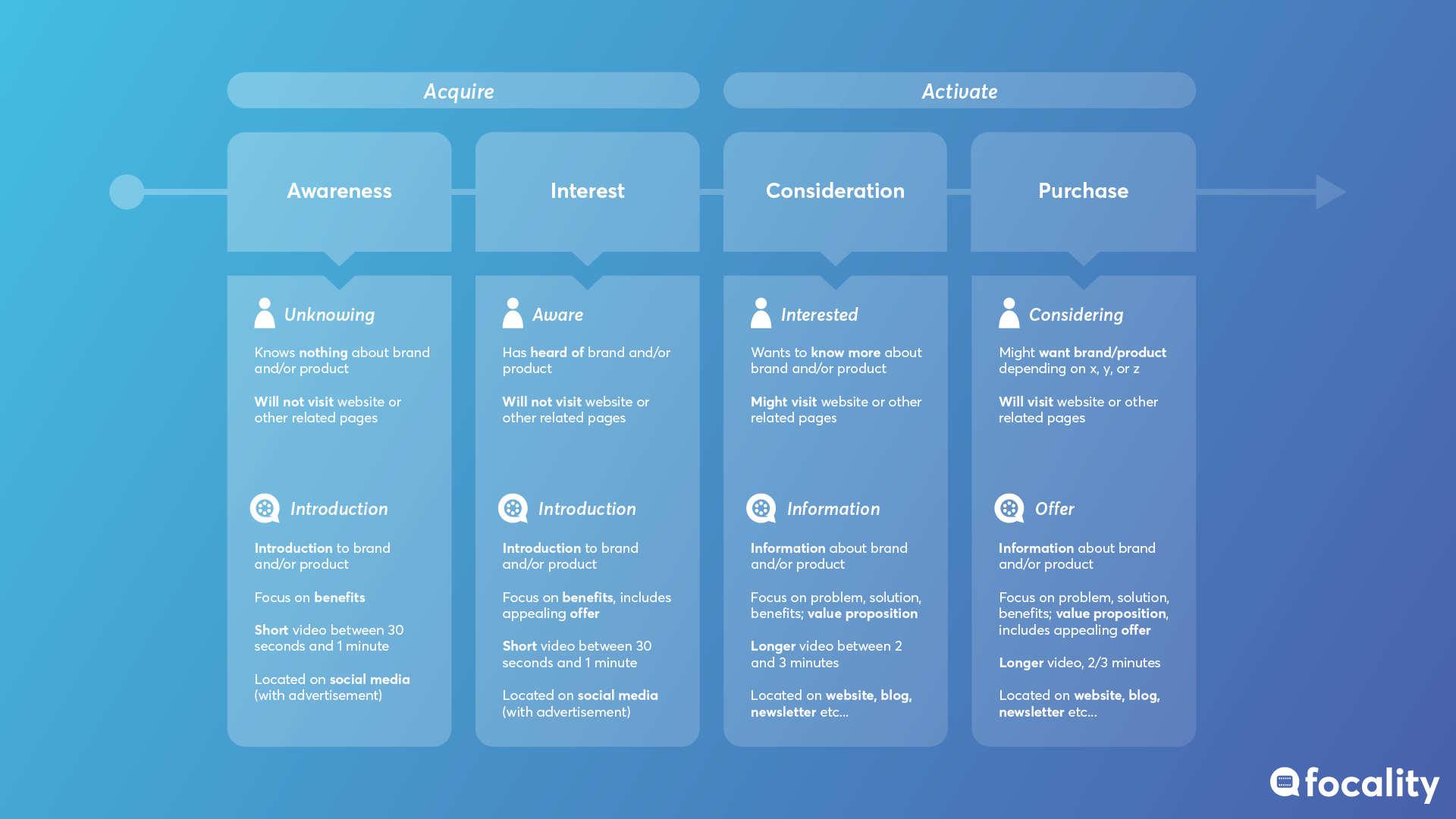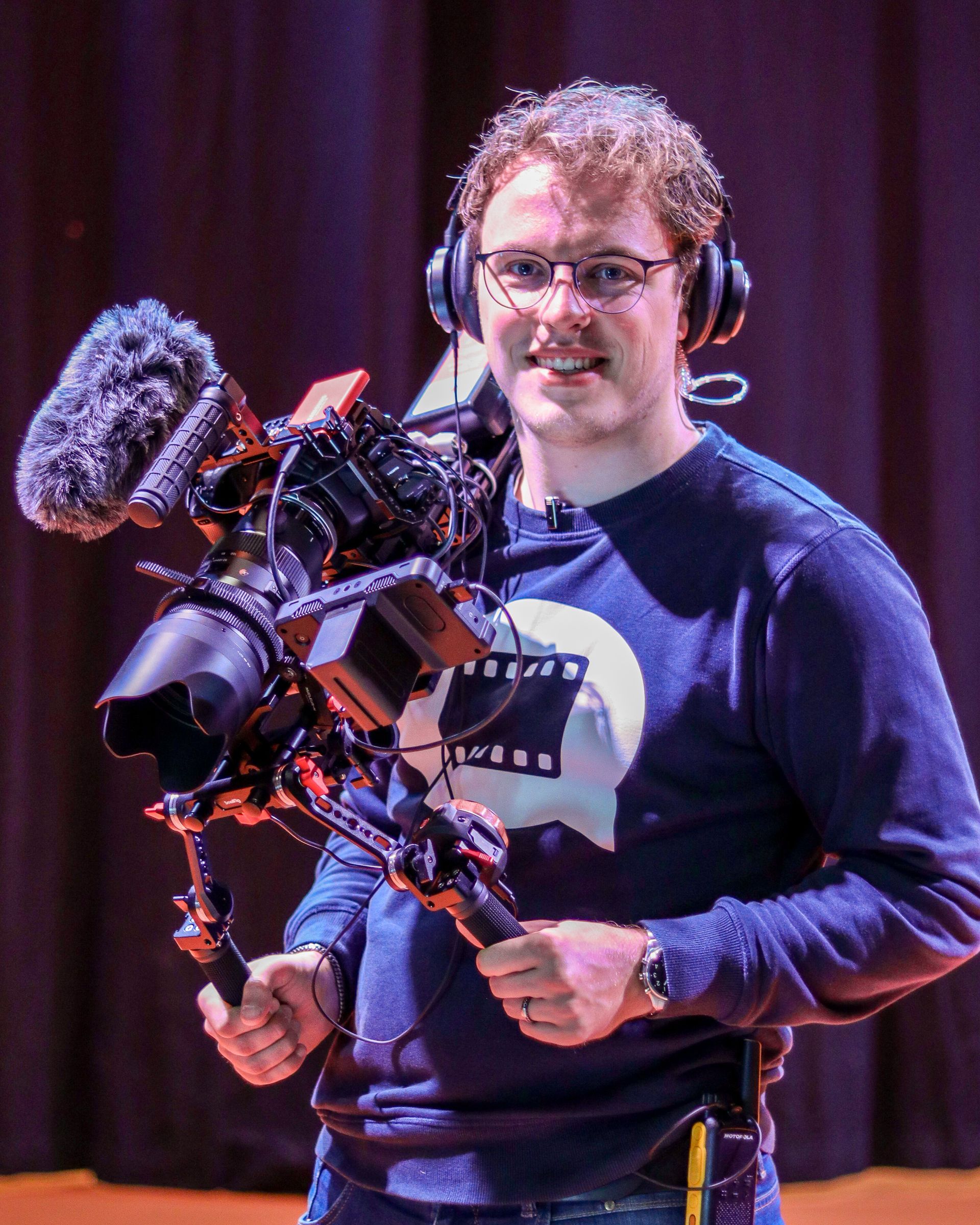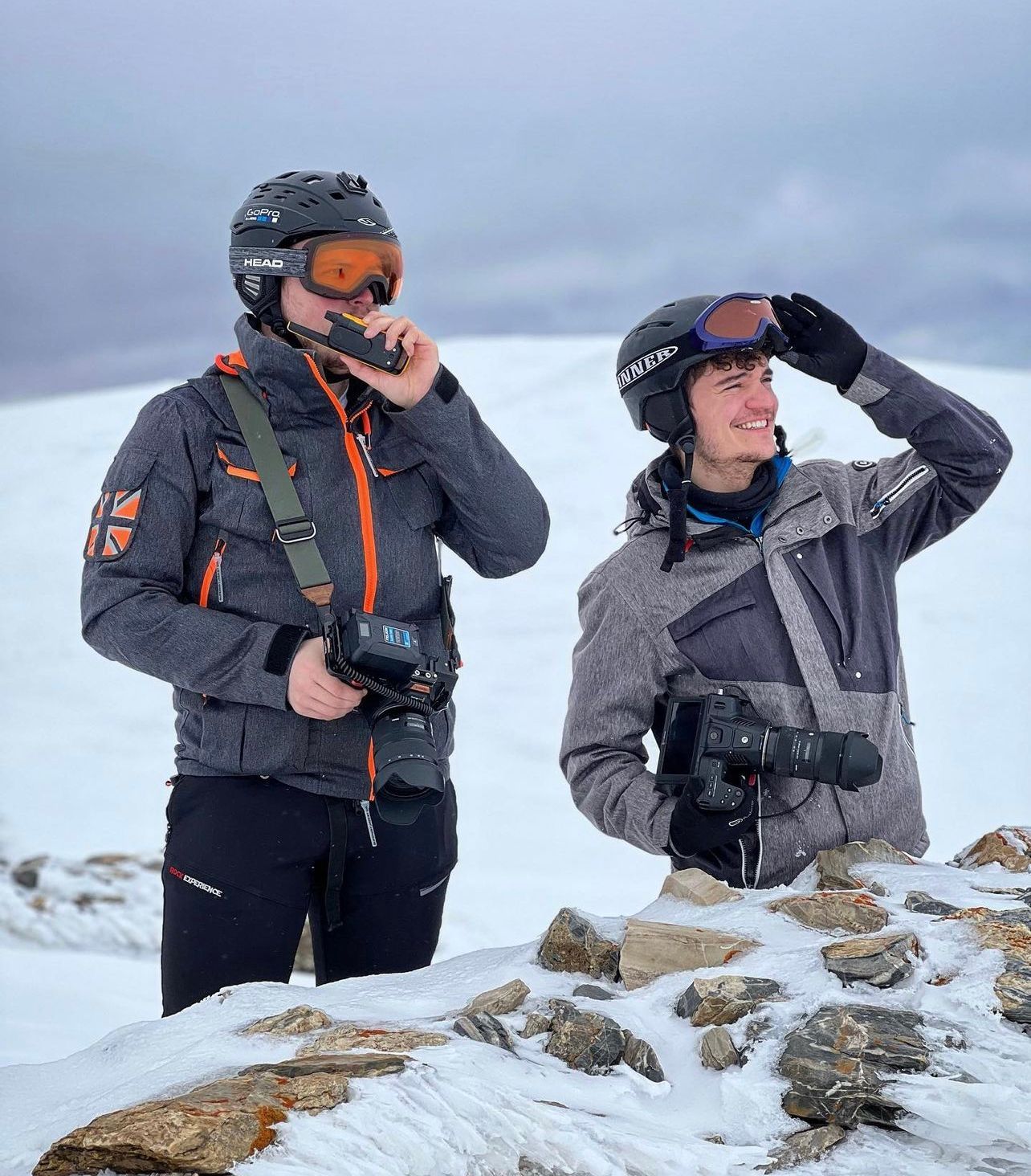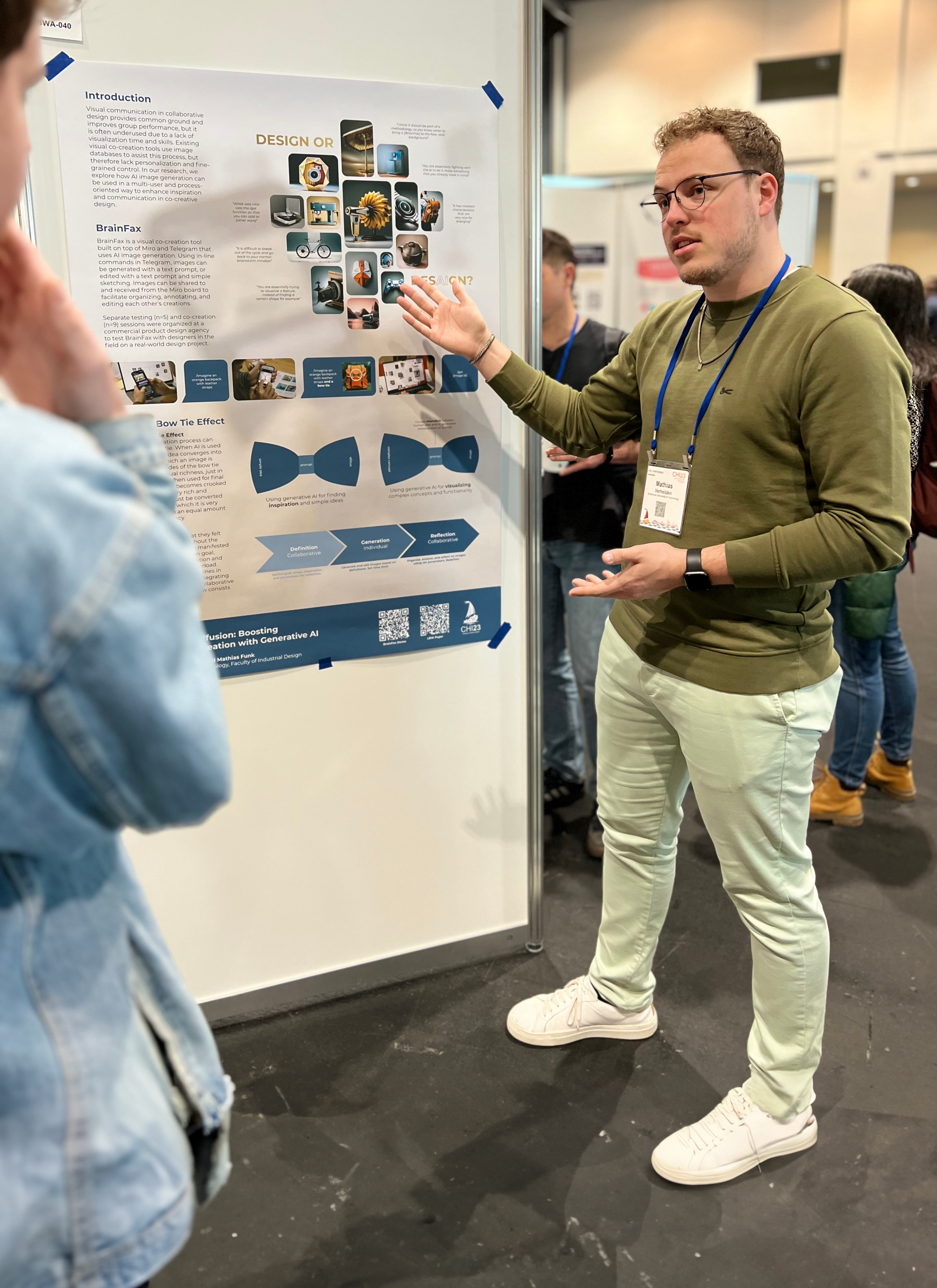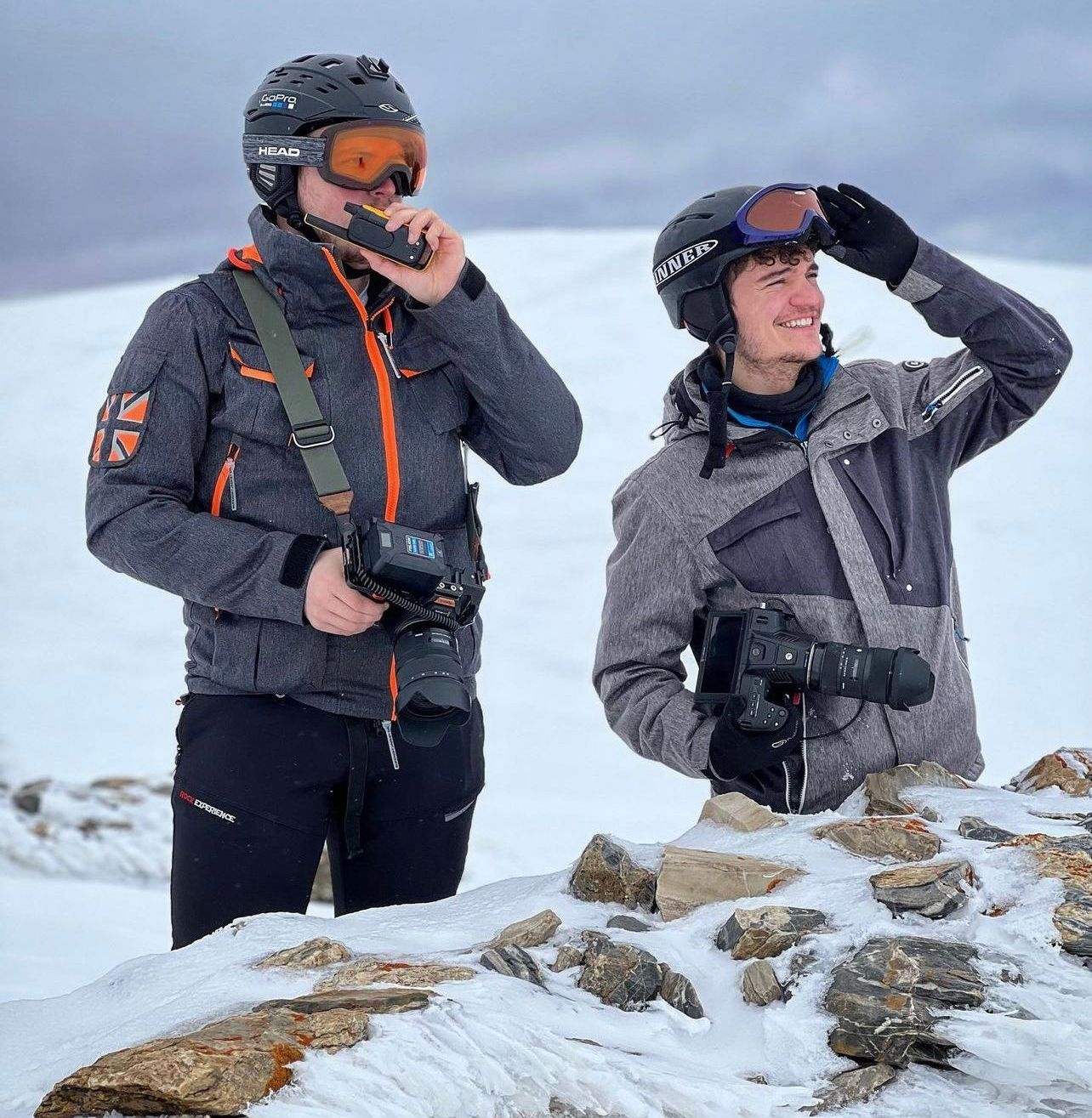This page is part of my graduation portfolio for the Master Industrial Design at Eindhoven University of Technology.
My Journey
After a diverse curriculum, I ended my Industrial Design Bachelor at TU/e with a strong focus on IoT, having developed a diverse skillset. I also recently co-founded Focality Media, a video production and marketing company. I felt, however, that there was more room to grow before working in industry, both as a designer and a professional. Therefore, I wanted to specialize and discover my area of expertise within this field throughout the Master.
Logically, I started my Master with my M1.1 project surrounding IoT. Although it was very successful, for example by exposing at the Dutch Design Week, it did not really spark my passion for design. My M1.2 project followed, in which I focused more on AI and mental models, albeit still in the IoT context. Again, although I could be enthusiastic about my work, I was not passionate.
Therefore, I decided to take a gap year and focus full-time on my company. This provided me with great life experiences but mostly showed me how valuable it is to work on something you are truly passionate about; storytelling. However, I had yet to find a way to incorporate this more strongly in my design work. And then there was generative AI.
I immediately recognized the opportunity to combine my passions for design and storytelling, and I truly believed this technology would become a highly relevant area. Therefore, I decided to dive deep into the subject and make my M2.1 project about generative AI, inspiration, and communication in design. It proved to be a relevant topic, judging from my CHI2023 publication. However, the project became more about research than design and felt somewhat unfinished. My FMP, therefore, continued in this direction, combining my passions for design and storytelling, and representing my identity, vision, and skillset as a designer.
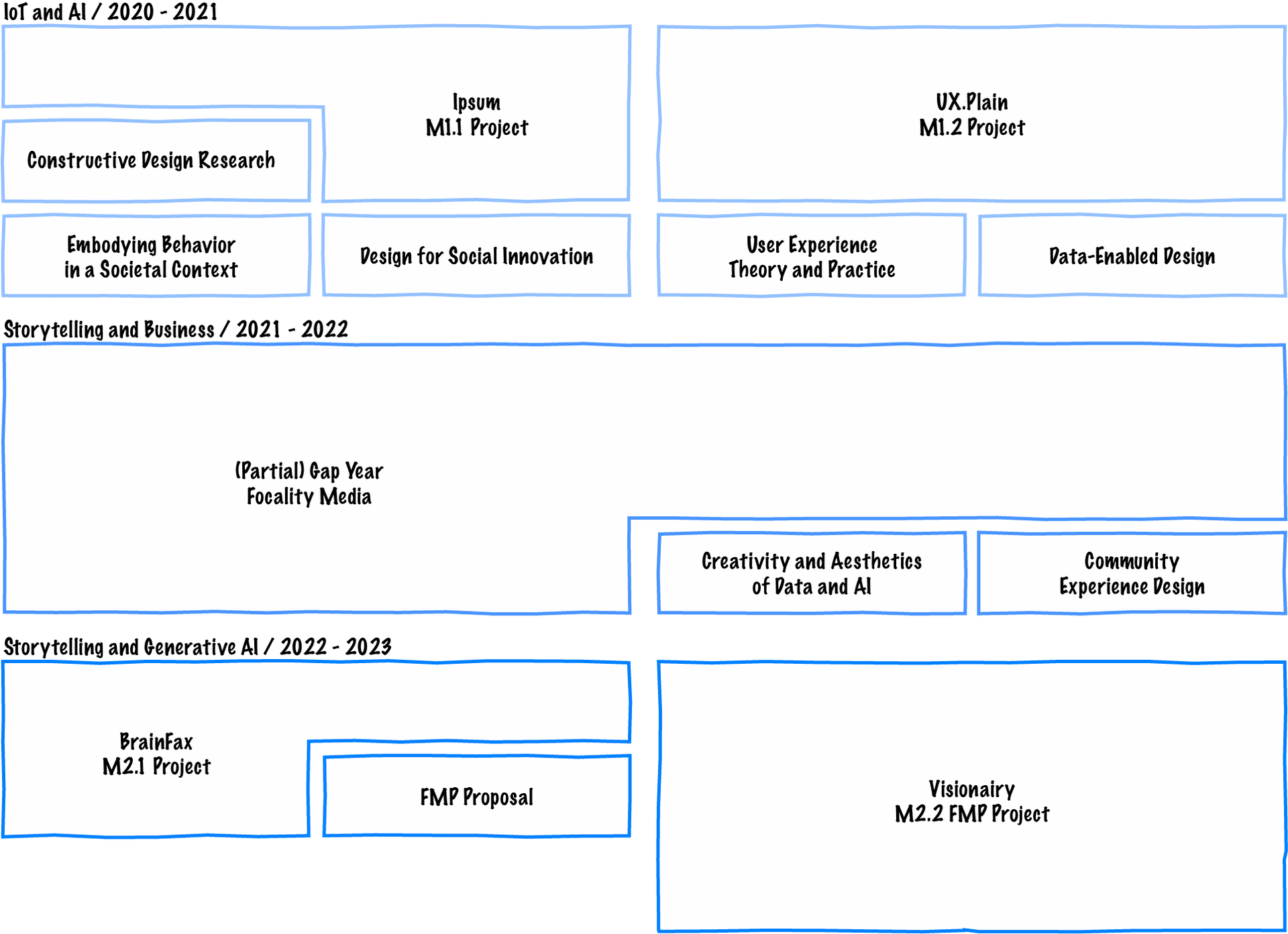
Expertise Areas
As indicated in my identity, I want to bridge the gap between everyday users and emerging technologies. Therefore, I strongly developed myself in the US and TR expertise areas. I believe this to be the core of the modern industrial designer, in which a thorough understanding of both user and technology is required to design in this landscape of rapid technological advancements effectively. This does not mean, however, that the other expertise areas are separate entities. Instead, I view them as supporting my core expertise, each in their own way. This allows me to maintain a holistic perspective on my design work, strengthening my design capabilities.
User and Society
To make a significant impact, I learned to appropriately develop a scope and research question around an ill-defined problem or topic (CDR). I learned how to exploratively gather quantitative data to enrich qualitative findings and vice-versa (DED). This allows me to reach a deeper understanding where additional findings emerge as you contextualize data in real-time.
I also developed a broad and theoretically grounded perspective on the multiple stages of UX, working from why, to what, to how (UXTP). This nicely complements my technological mindset and better grounds my design decisions by focusing on empathy, needs- and value-based design, and understanding behavior from a theoretical perspective.
I can also develop methodologies, e.g., by creating a card sorting system based on data types for assessing mental models in IoT systems (M1.2). This experience made me a versatile designer that can synthesize creative methods for accessing new insights. Furthermore, I learned to generalize my findings to generate knowledge that contributes to a relevant and professional audience, e.g., through my CHI2023 publication.
Finally, I learned how to engage with users at a larger scale, leveraging communities for need-finding, ideation, and getting commitment for your projects (CXD). This different mode of engagement allows me to operate at both micro and macro scales. Additionally, I can place findings in a societal perspective (DSI), learning about theories and practices that place isolated design challenges in a transformative societal context.
[1] Verheijden, M. P., & Funk, M. (2023). Collaborative Diffusion: Boosting Designerly Co-Creation with Generative AI. In Extended Abstracts of the 2023 CHI Conference on Human Factors in Computing Systems. https://doi.org/10.1145/3544549.3585680
Technology and Realization
At the beginning of the Master program, I did not always dare to think out-of-the-box because of my limited realization skills. Throughout this program, however, I continuously stepped out of my comfort zone to develop robust skills and perspectives, allowing me to realize my ideas and afford more creative freedom.
In my M1.1 project, I significantly improved my physical realization skills. Given its many moving parts, this prototype required developing the necessary mechanical skills and calculations. By also learning to carefully select and implement the right technological components, I can create robust physical prototypes that convey functionality and are appreciated for their aesthetical and mechanical quality, for example, by the Dutch Design Week and DutchDesignDaily.com (M1.1).
This change of mindset, in which prototypes are no longer just experiential entities but careful integrations of form, function, and interaction, is also visible in my CADA prototype. Even in merely functional prototypes, such as the ones from DED, I aim to ensure a robust implementation that can withstand longitudinal deployment and use.
By forcing myself to step out of my comfort zone by learning and repeatedly using new languages like Python and JavaScript, I can now create custom applications (M1.2, EIBSC). I also learned to leverage multiple external services and APIs to diversify my abilities further to expand my realization possibilities (M2.1). Along with this process, I learned how to properly communicate the functionality of my creations through clear annotations and system overviews (DED, M2.1).
Math, Data, and Computing
With a strong background in math and data analysis from my Bachelor, I mainly focused on AI, data-enabled, and data-driven design.
In terms of AI, I learned to build and train a neural network through the development of an AI planning tool (EIBSC). Additionally, I learned how to analyze the performance of AI models to assess their effectiveness and implement multiple XAI strategies for creating trust and intelligibility around my designs (EIBSC).
I further focused on the aesthetics of interaction around AI-enabled designs. To achieve this, I learned about the theoretical aspects behind human-AI relationships, role divisions, error boundaries, and mental models (CADA). I learned how AI models have specific aesthetics that can be used as design material, shaping the design's interaction and behavioral characteristics (CADA). An inverse example of this is my M2.1 project, where I investigated the aesthetics of generative AI in the design context and published my findings at CHI2023.
Finally, many of my projects have a data-driven character. For example, I used data from other projects in the squad as design material for enriching and expanding our design (M1.1). I used data types from state-of-the-art IoT systems as design material for building a tool to map users’ mental models (M1.2). Finally, I learned additional practical and theoretical skills to collect and act upon user data in real time, including analysis, finding complementary datatypes, and the data-enabled design method (DED).
[1] Verheijden, M. P., & Funk, M. (2023). Collaborative Diffusion: Boosting Designerly Co-Creation with Generative AI. In Extended Abstracts of the 2023 CHI Conference on Human Factors in Computing Systems. https://doi.org/10.1145/3544549.3585680
Creativity and Aesthetics
Throughout the Master, I improved my form-giving skills and attitude toward design. Specifically, I developed a design language that is not just functional but also aims for high mechanical and aesthetical quality in which simplicity is key. External parties appreciate this, as my M1.1 project was exhibited at the Dutch Design Week and on DutchDesignDayly.com. I now consciously make the difference between design and prototype, giving me even more creative freedom (CADA).
Although this had always been one of my strong points, I also improved my visual communication. This extends to my work at Focality, which caused video to be one of my main methods of communication. Additionally, I gained better illustration skills through the many infographics I made for the DSI course, being able to translate complex concepts into appealing and understandable visualizations.
Finally, I developed a broad set of creative tools, techniques, and intuition for a structured and conscious way of working. In my M1.1 project, I heavily used multiple exploration techniques, guided by a first-person perspective. The card sorting used in my M1.2 project showed that I can also adapt methods to better fit more specific goals. The UXTP course helped me recognize how many innovations are not built from needs, shaping my vision on design and using it as a central motivator for my design work.
Video Examples
Business and Entrepreneurship
I explored this area mostly through my work at Focality Media. It allowed me to explore many perspectives offered within the faculty’s sandbox by actually conducting them in the real world.
We started in 2019 with a market analysis, iteratively defining a niche, and developing our value proposition. In line with my Vision, Focality mainly focuses on marketing highly complex technological innovations to a broad audience. In other words, bridging the increasing gap between rapid technological developments and potential stakeholders. This was not only fitting for our skillset but also for potential clients in the Brainport area.
Throughout the years, we developed and pivoted our value proposition and business model multiple times based on the changing needs in the market. This meant managing and taking risks surrounding our current value proposition and making financial investments to expand it and offer new services.
This resilient approach resulted in continuous growth since our start in 2019, despite difficulties like the Covid pandemic. The success is evident with many local and international clients and a significant profit. In short, this experience helped me to develop a strategic and entrepreneurial attitude in a real-world environment that I can use to complement my design work within the department.
Finally, I further broadened my knowledge within the department through the DSI course, gaining theoretical knowledge about social design and innovation for societal transformation and transition management.


